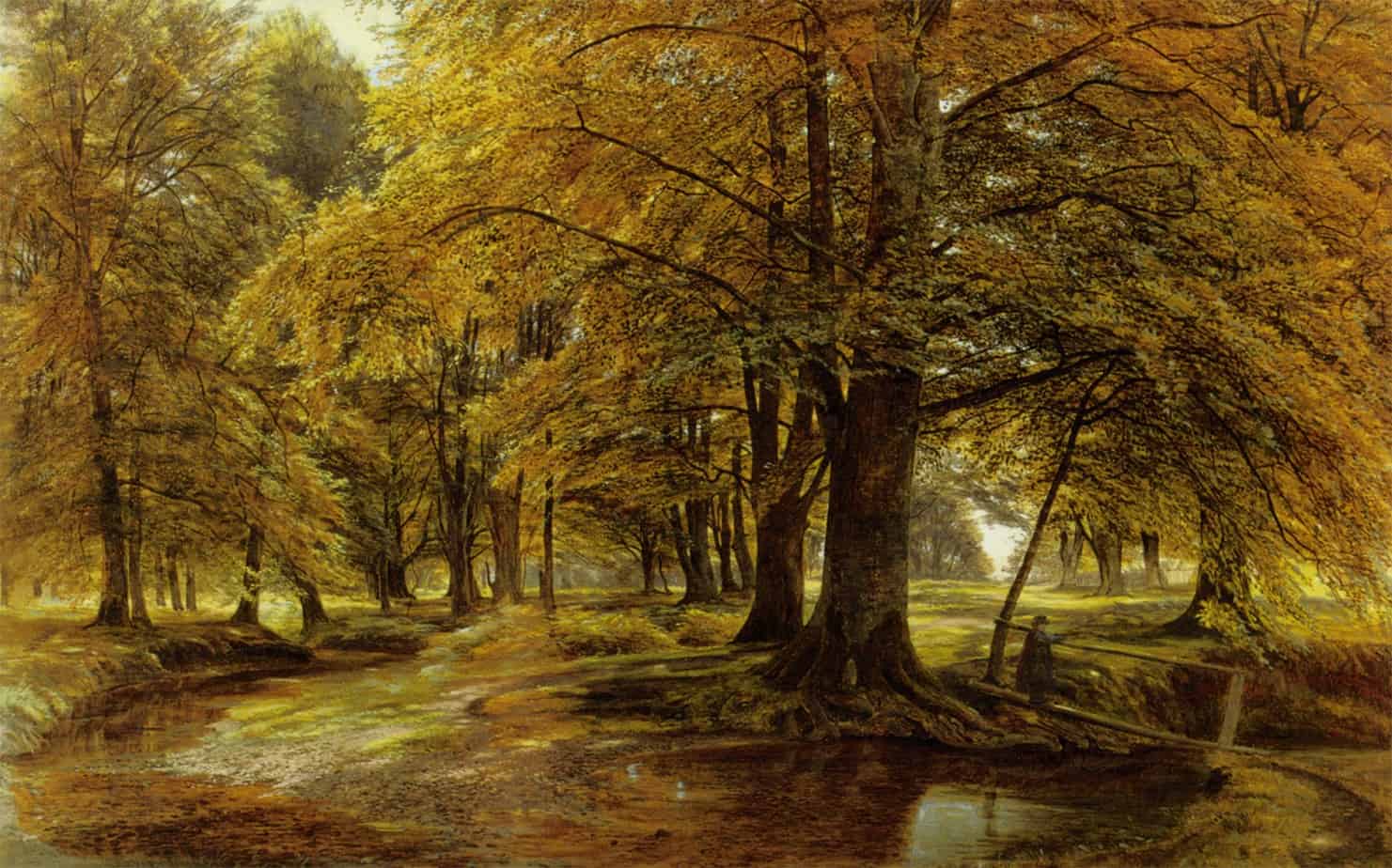Why bridges and rainbows? What have they got to do with each other? Well, the archetypal bridge is an arc shape, like the rainbow. Symbolically, bridges and rainbows can be similar.
Here are a few bridges in art which illustrate the link.

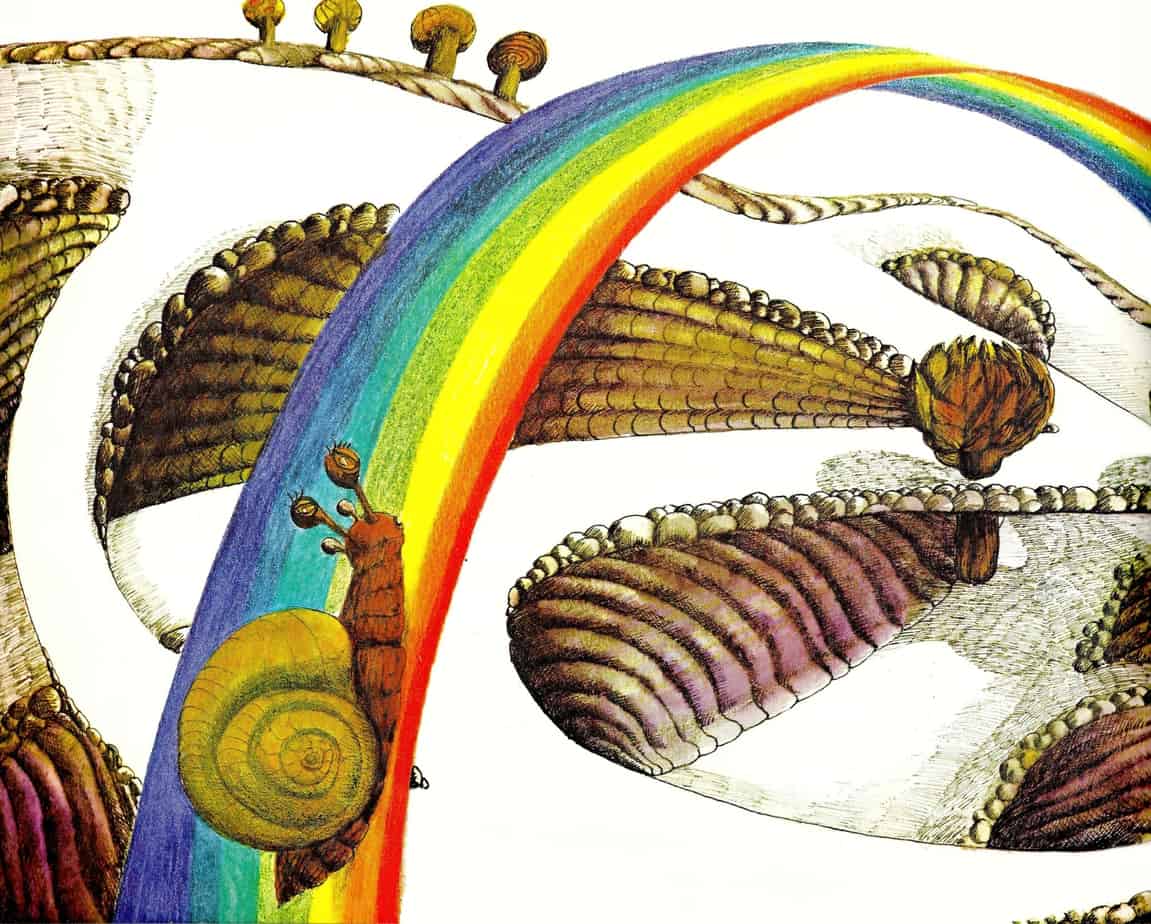
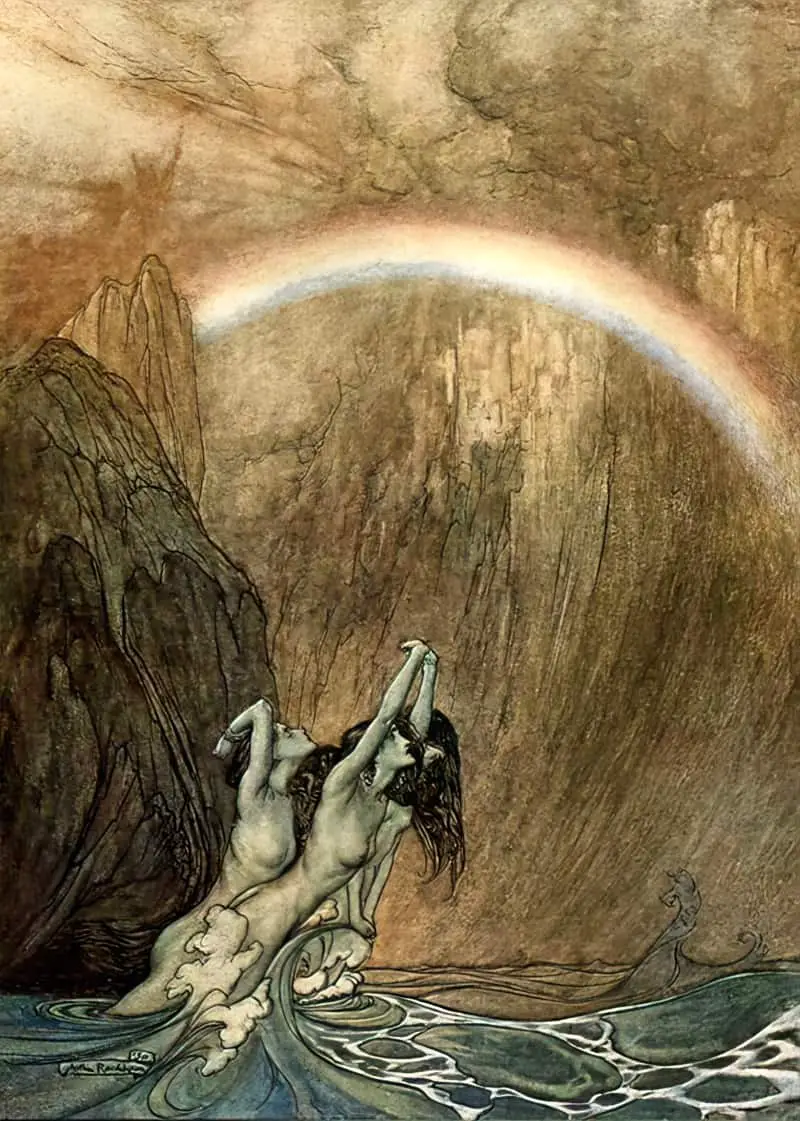
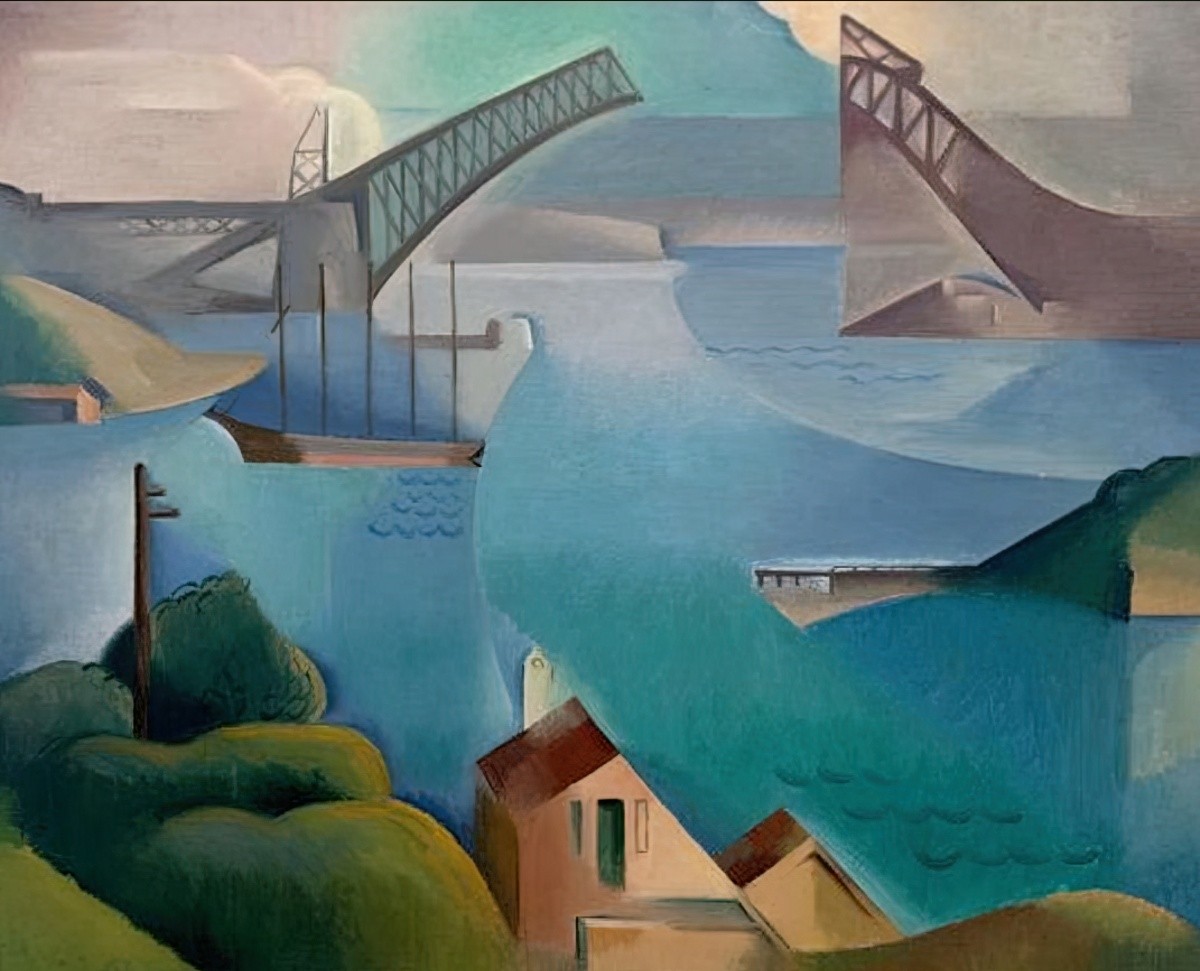
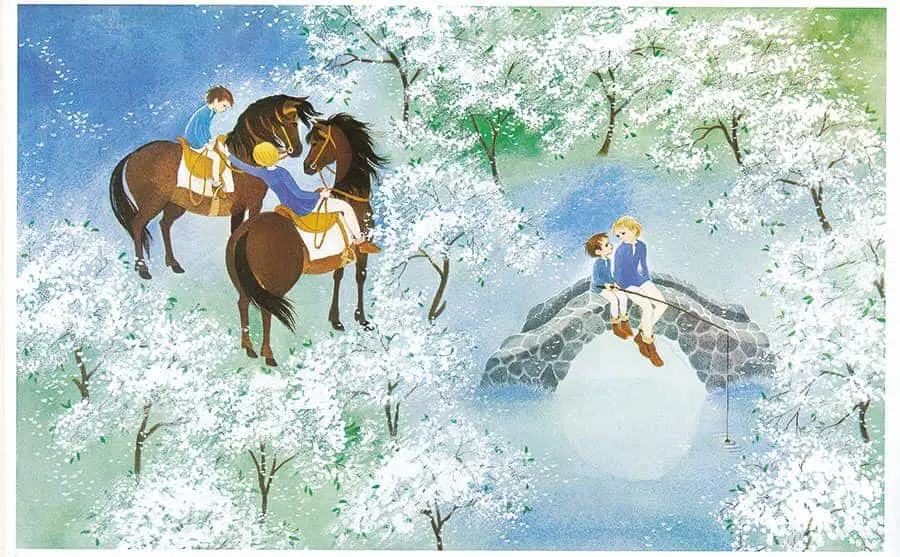
Of course, when we think of The Storybook Bridge, it’s the arch style bridge that comes to mind.
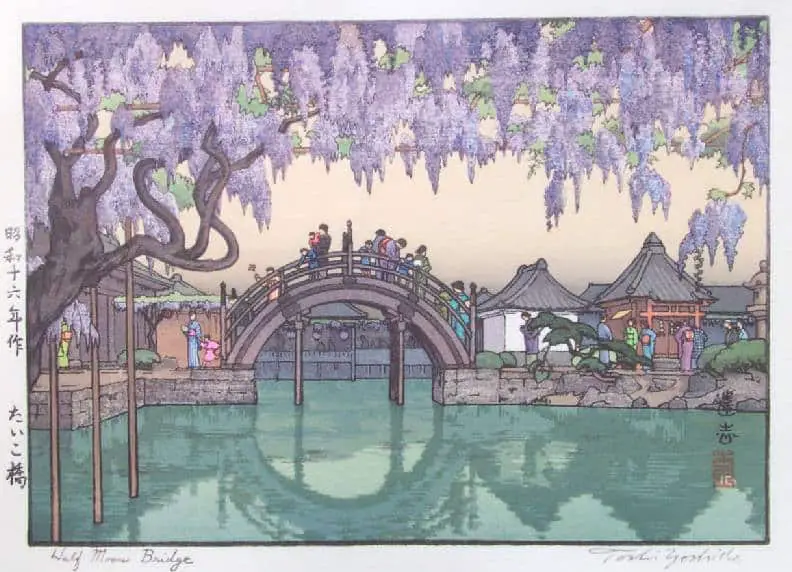
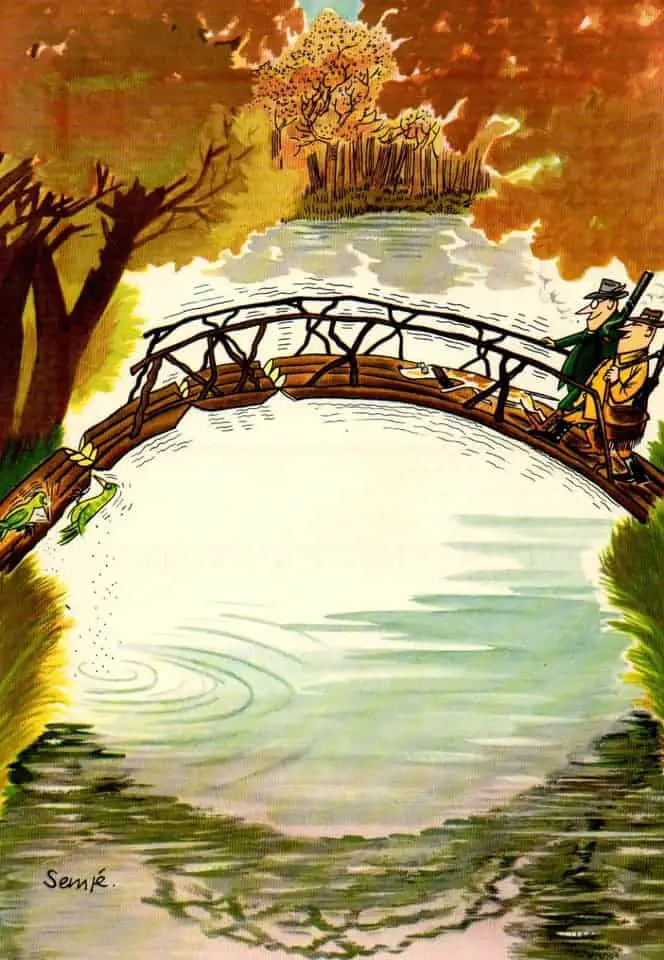
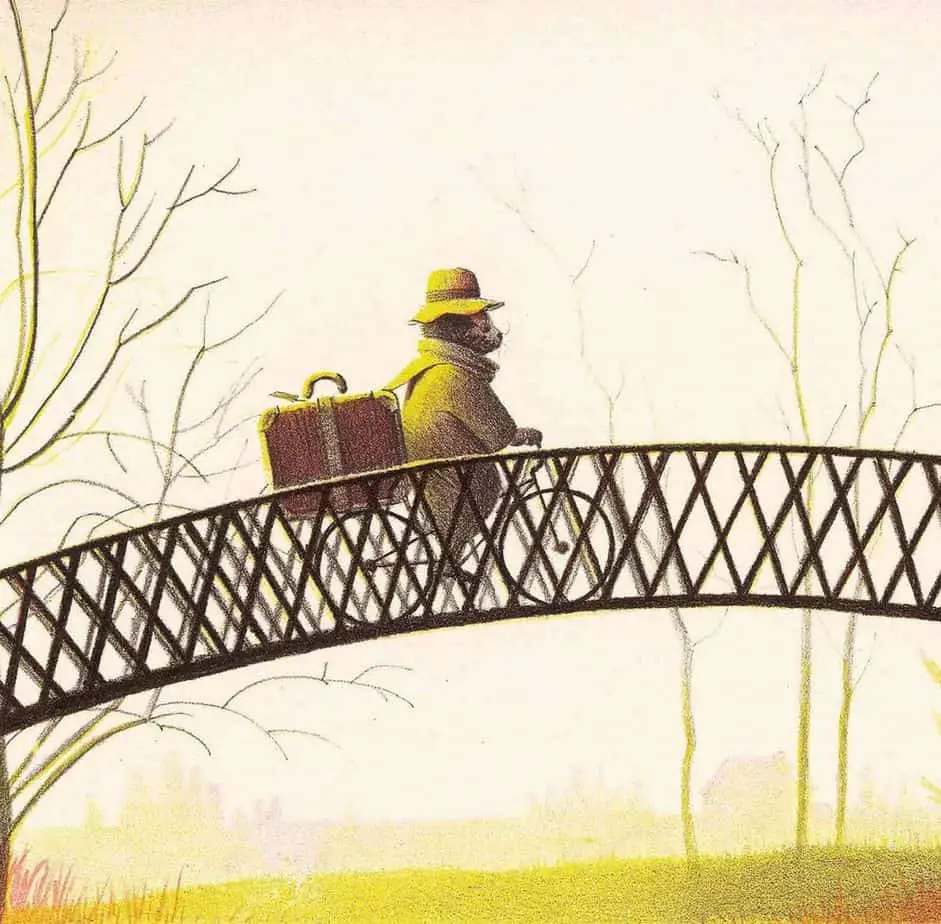
How’s this for an impressive bridge?
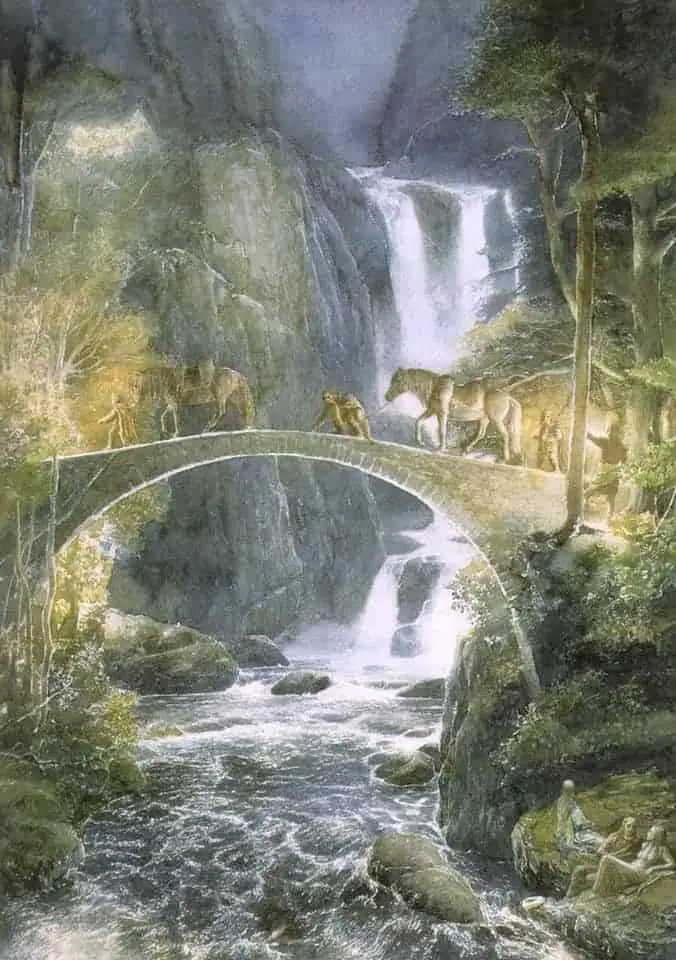
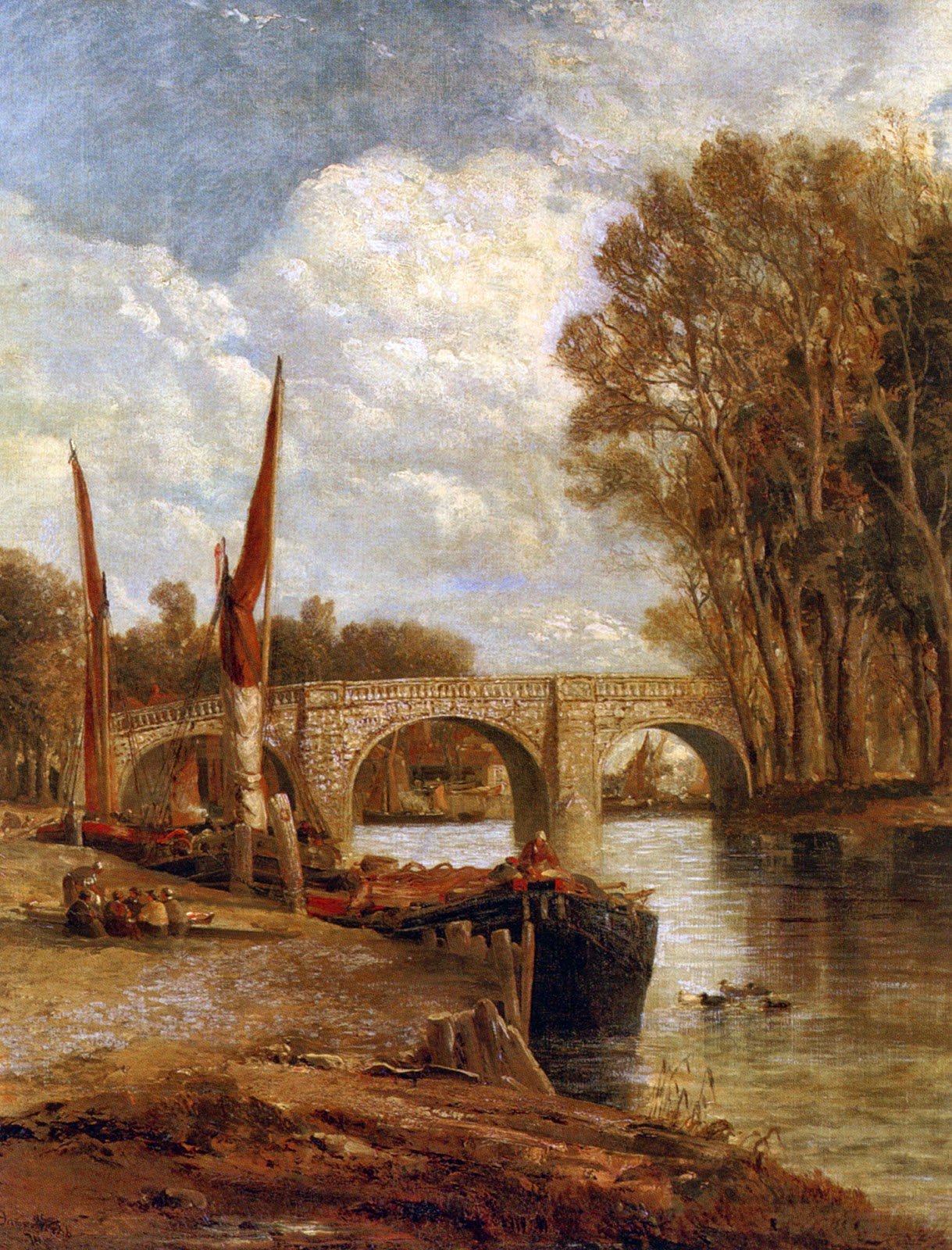
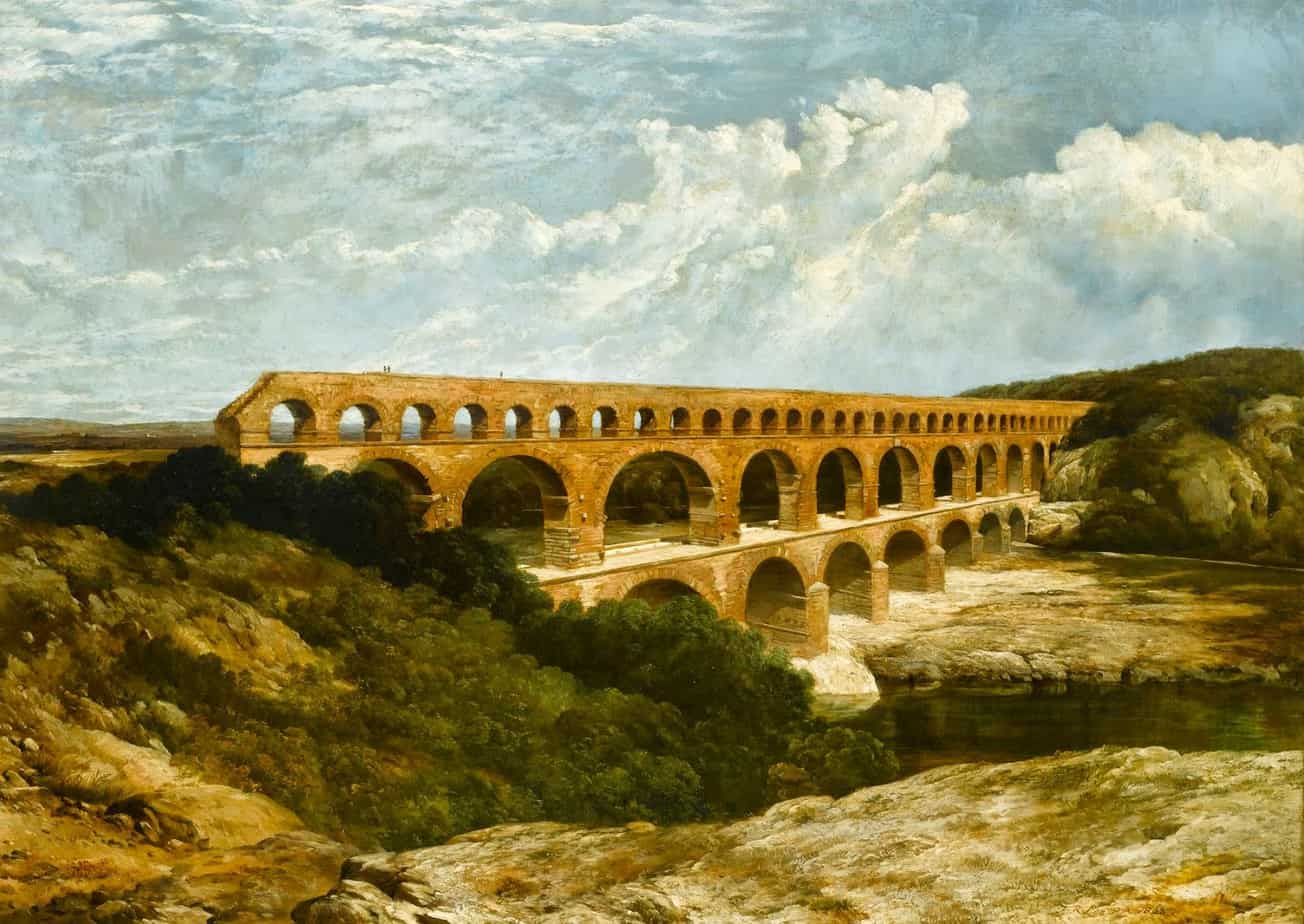
Here we have a ‘through arch’ bridge.
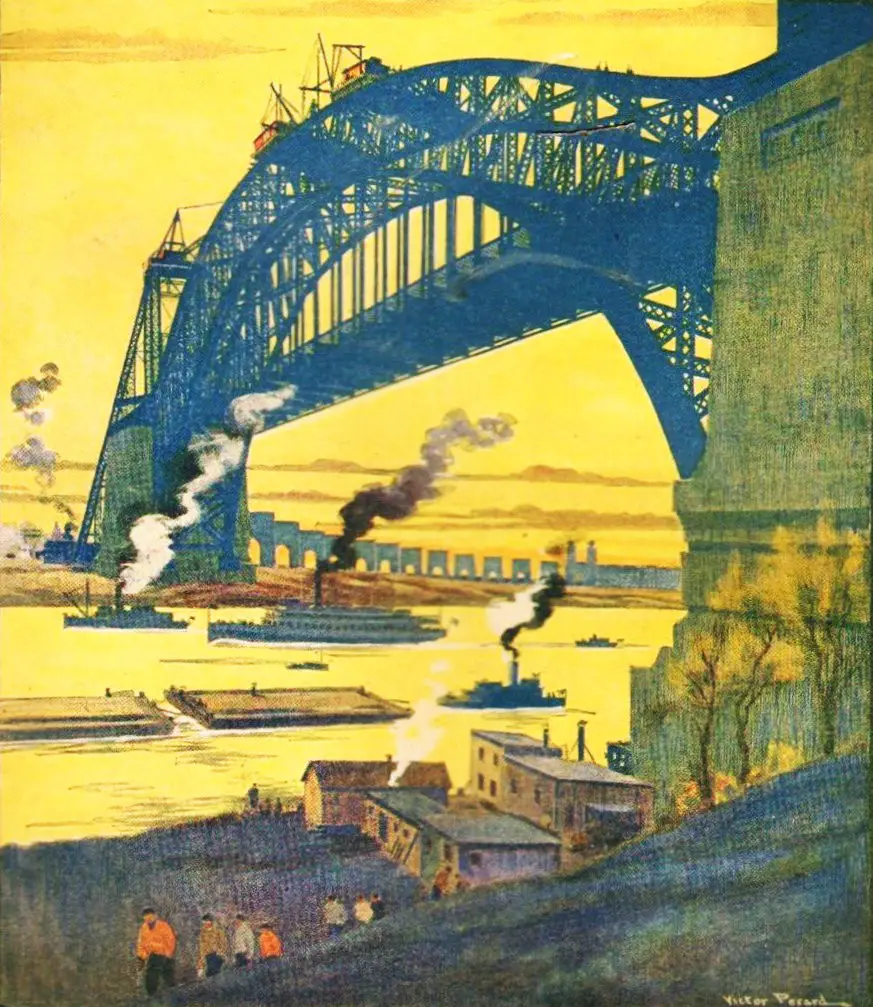
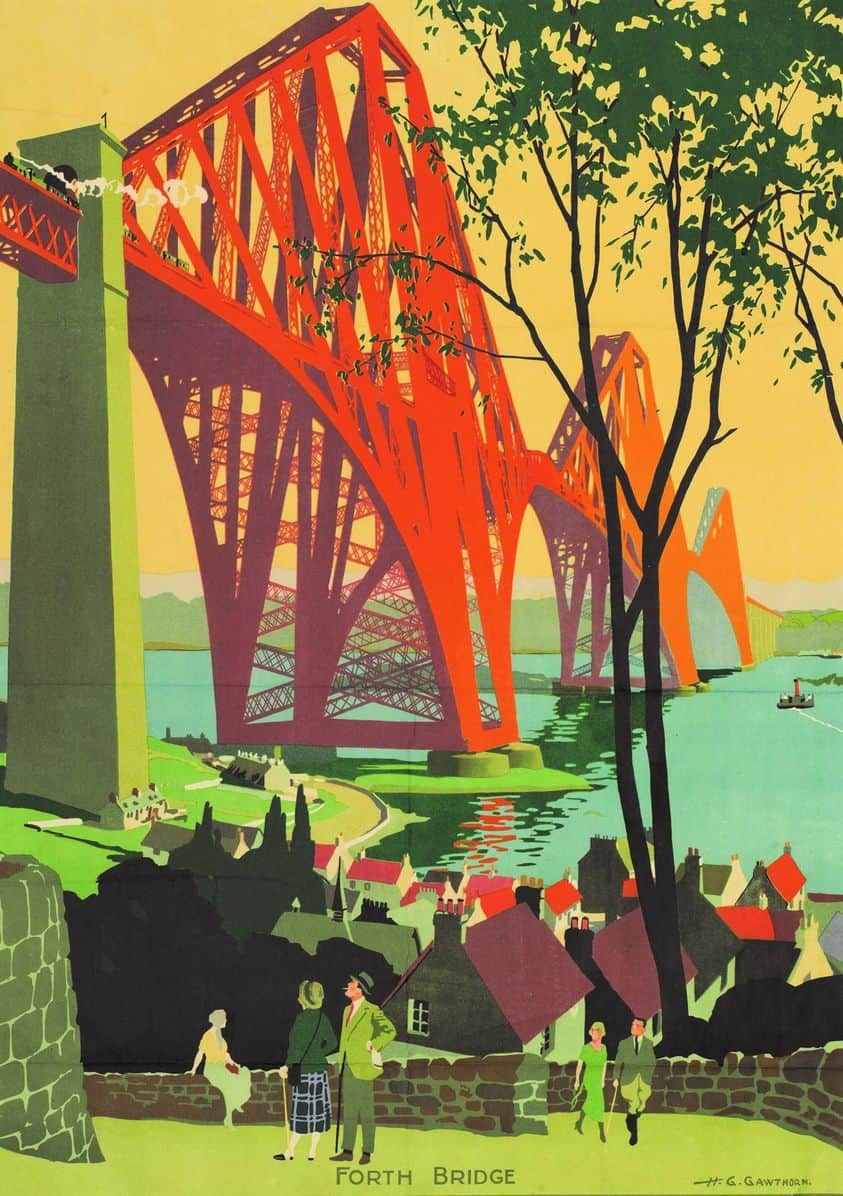
A viaduct is a specific type of bridge that consists of a series of arches, piers, or columns supporting a long elevated railway or road. Typically a viaduct connects two points of roughly equal elevation allowing passage over a valley, road, river, or other low-lying feature or obstruction.
![Paul Delvaux - The Viaduct [1963]](https://www.slaphappylarry.com/wp-content/uploads/2021/01/Paul-Delvaux-The-Viaduct-1963.jpg)
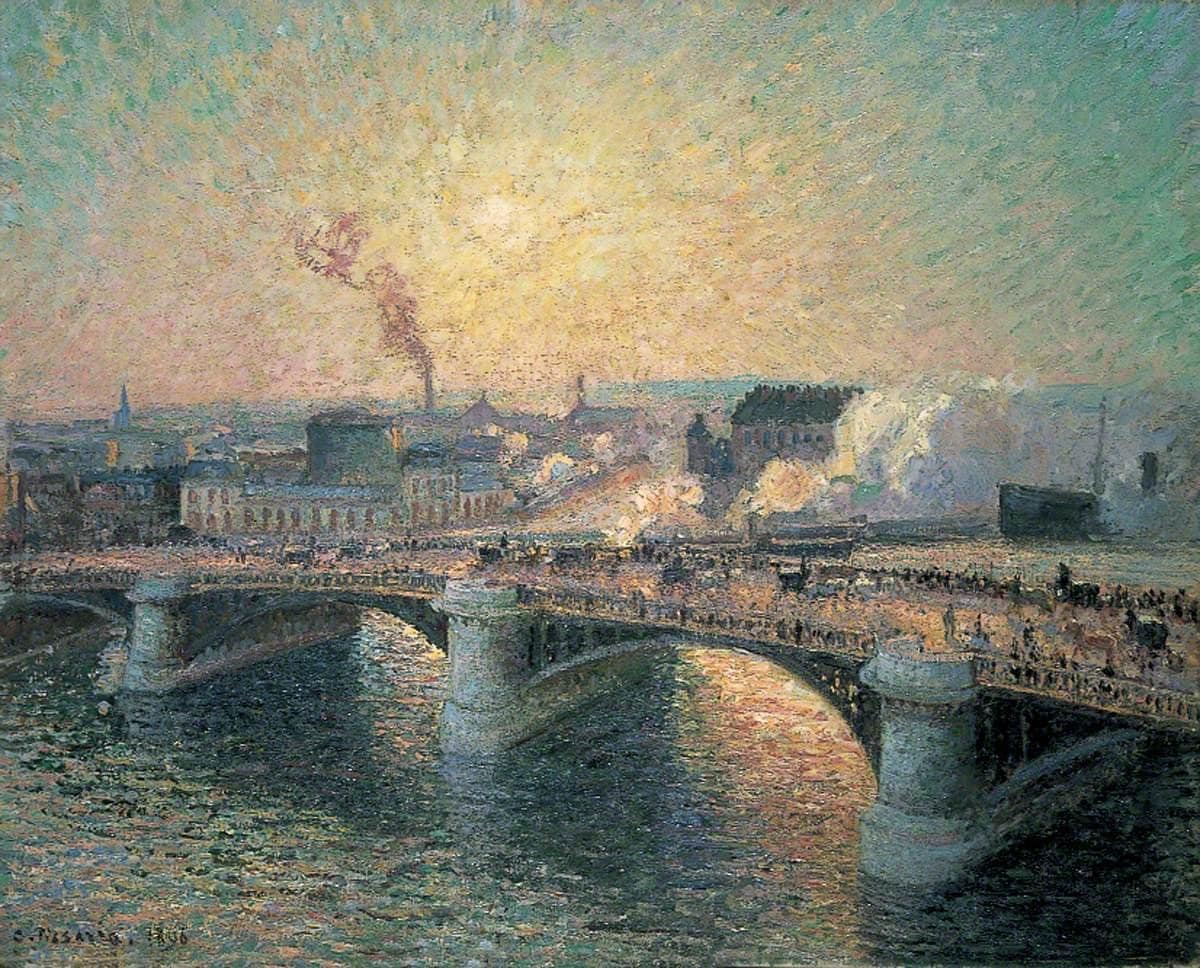
But the arch bridge is just one style of many. Here’s a log (a.k.a.) beam bridge.
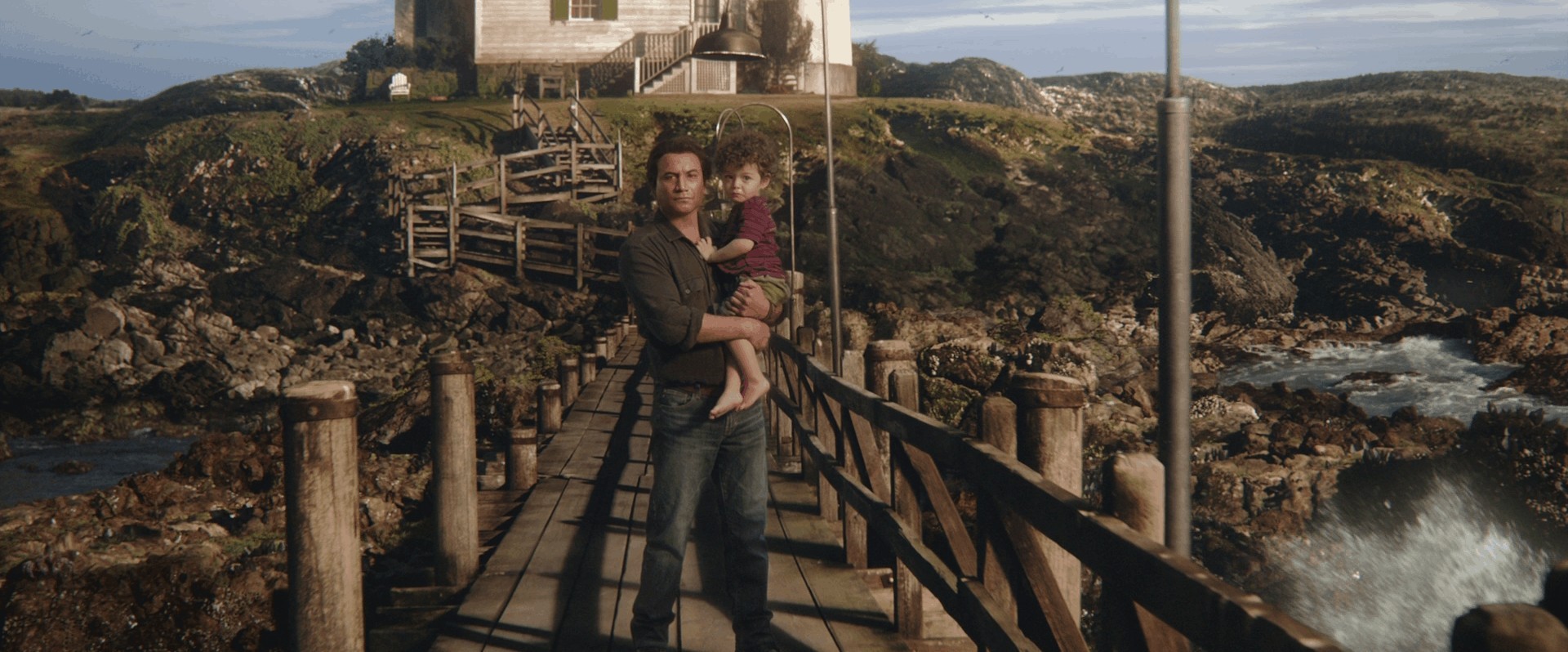
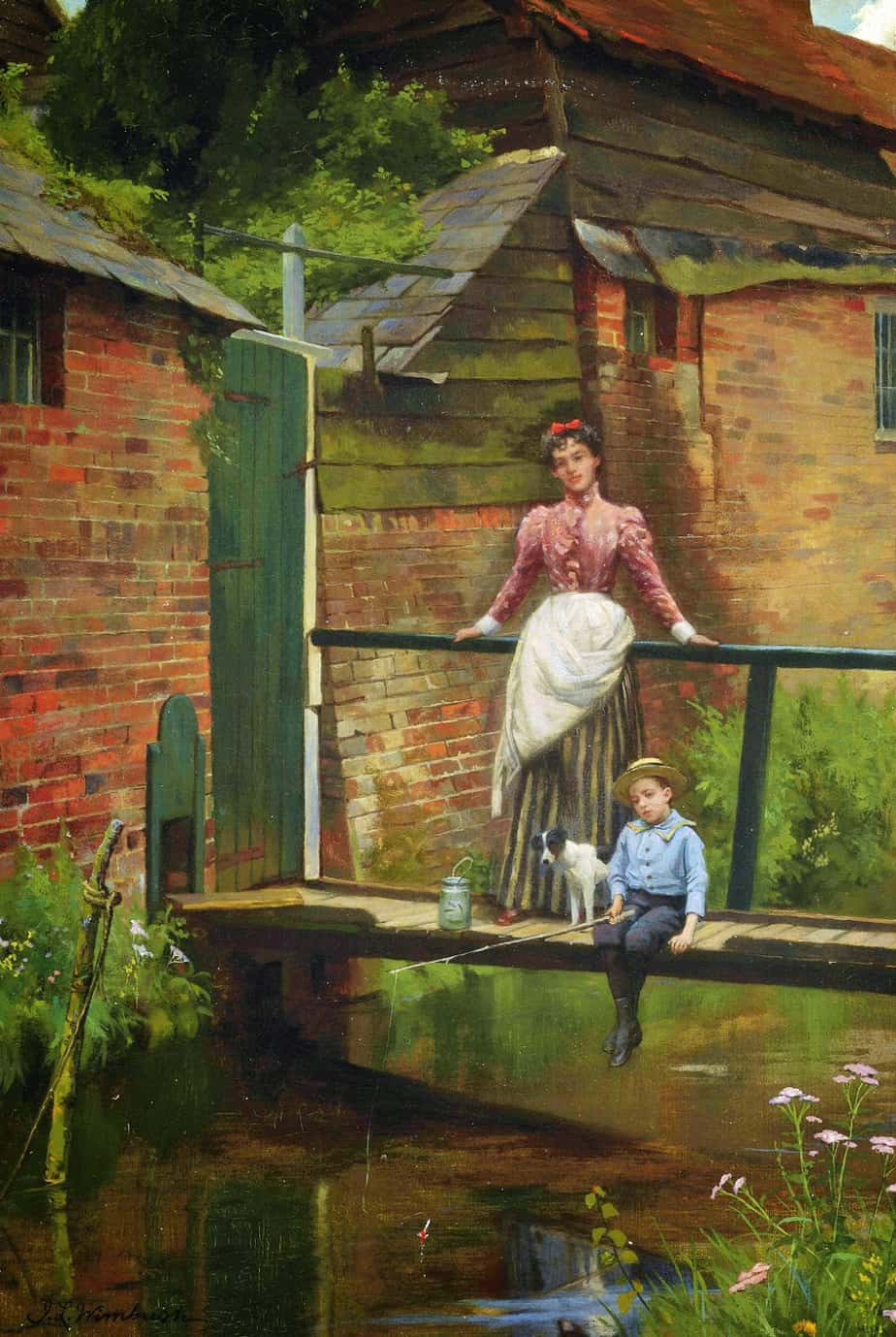
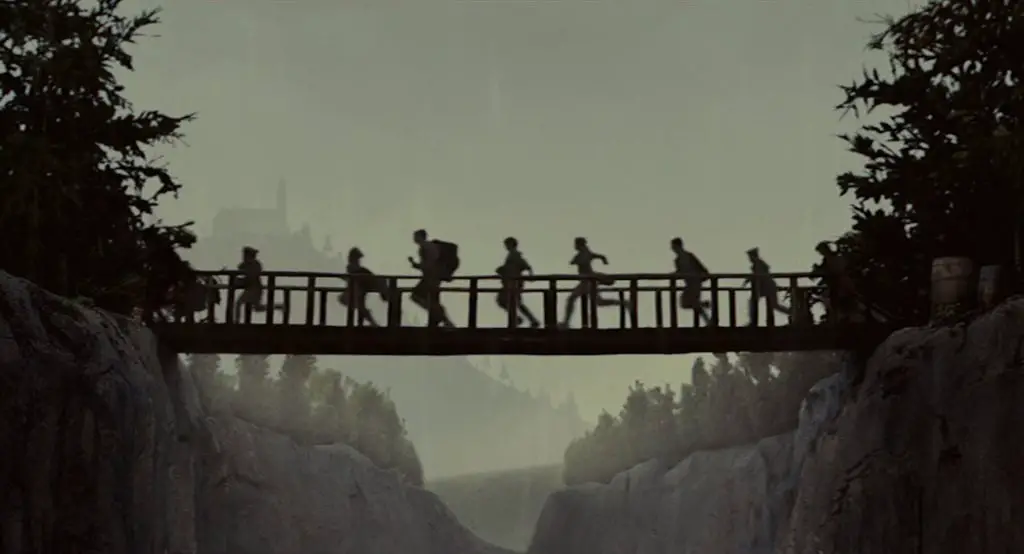
THE MOST LITERAL SYMBOLISM OF THE BRIDGE
In its broadest most literal sense, the bridge symbolises a transition from one state to another.
Following on from that, the bridge symbolises change, or the desire for change.
Here we have two lovers (or potential lovers) on a bridge. The bridge has two-fold symbolism: a ‘bridge between (people) rabbits’ as well as a change in state/status (relationship status).
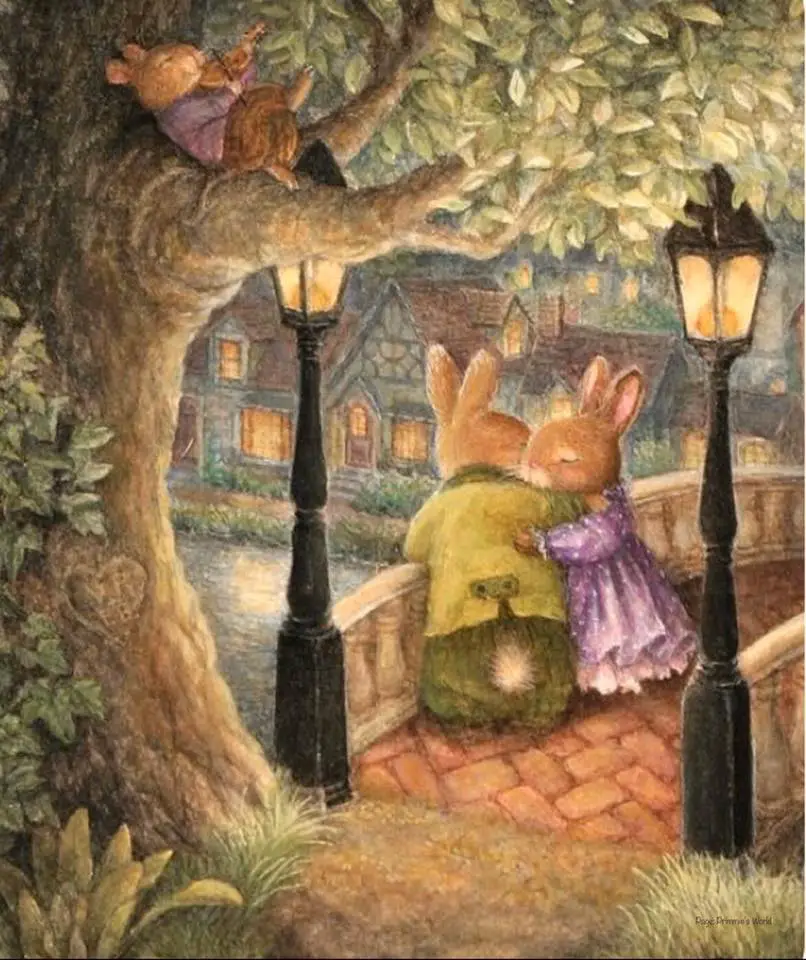
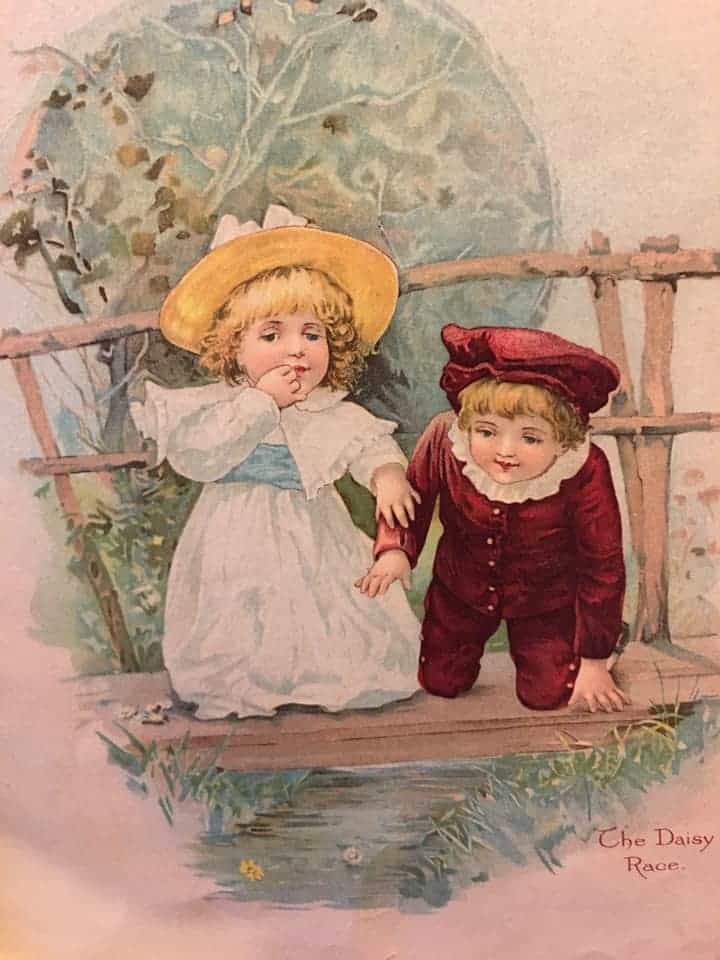
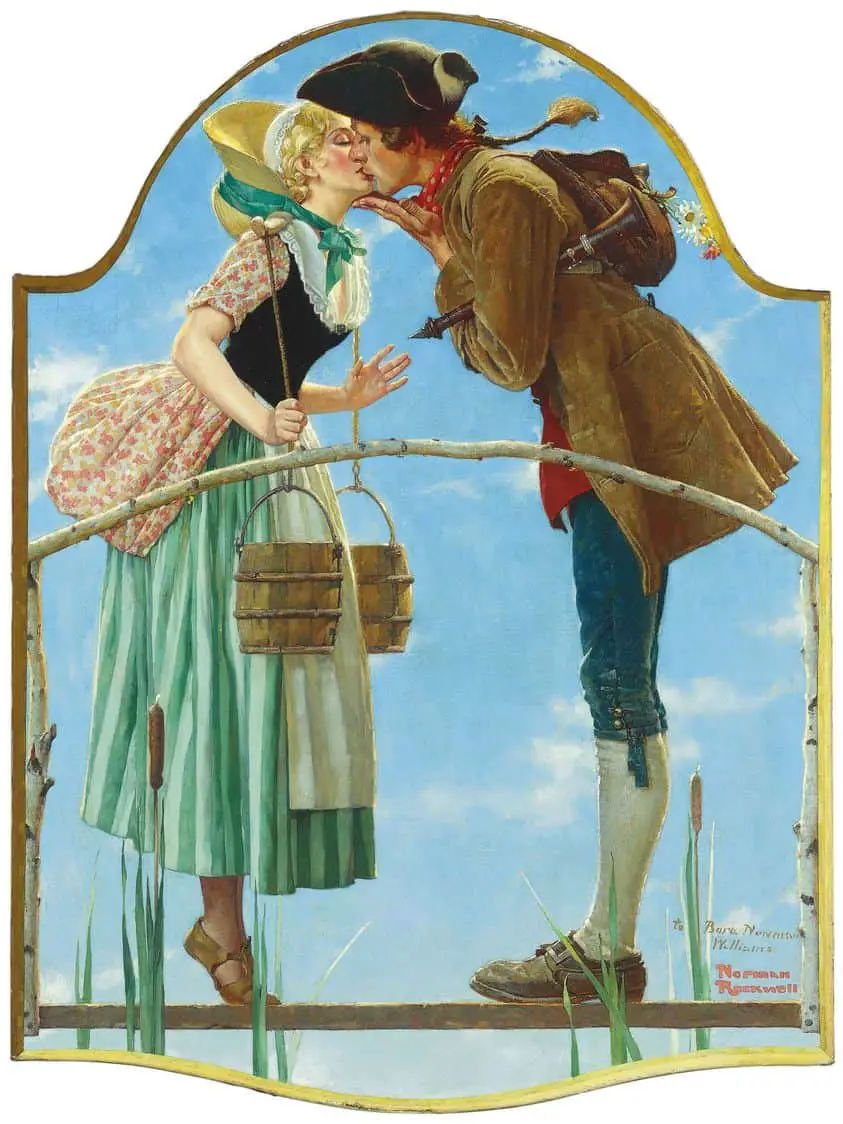

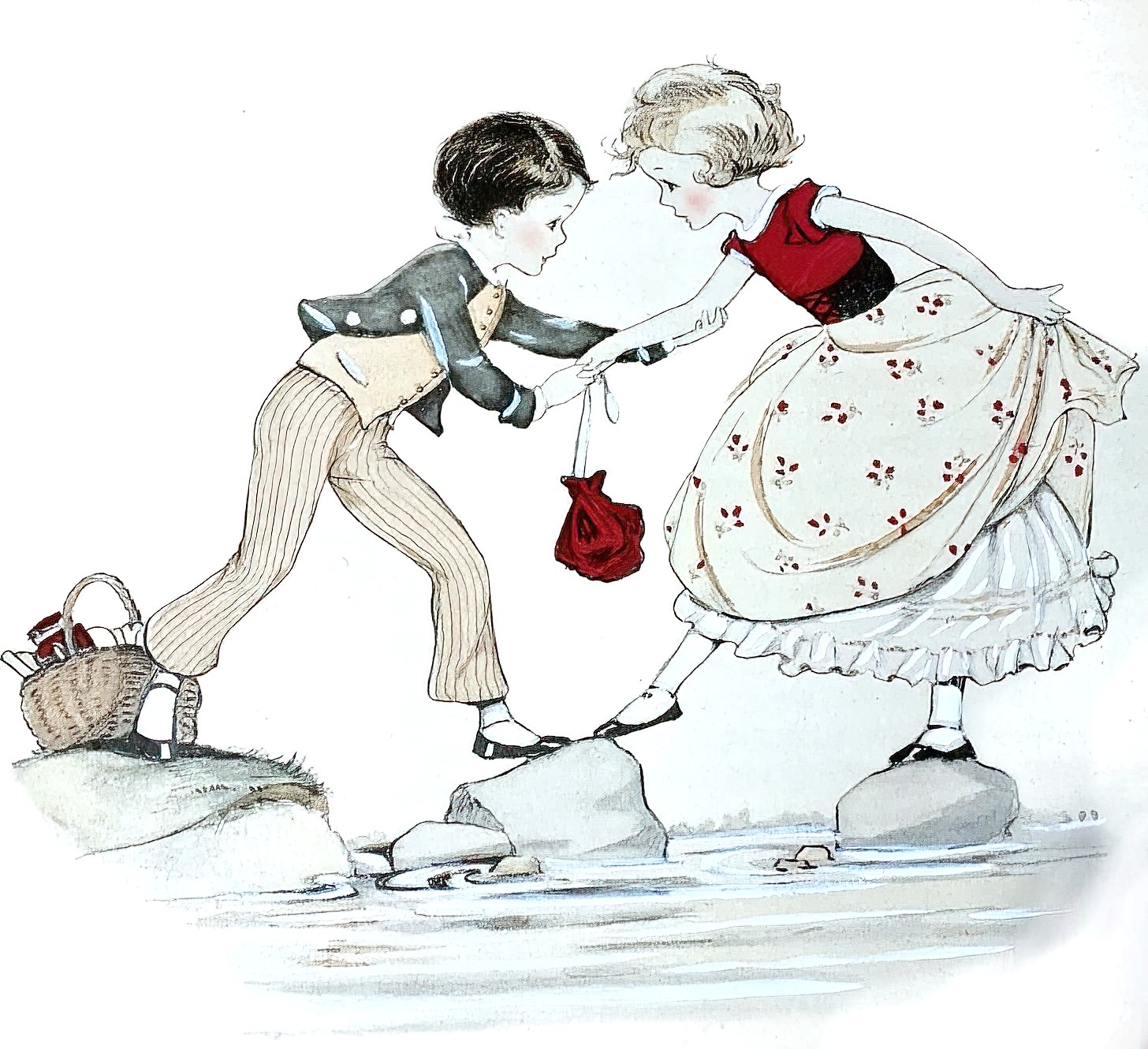
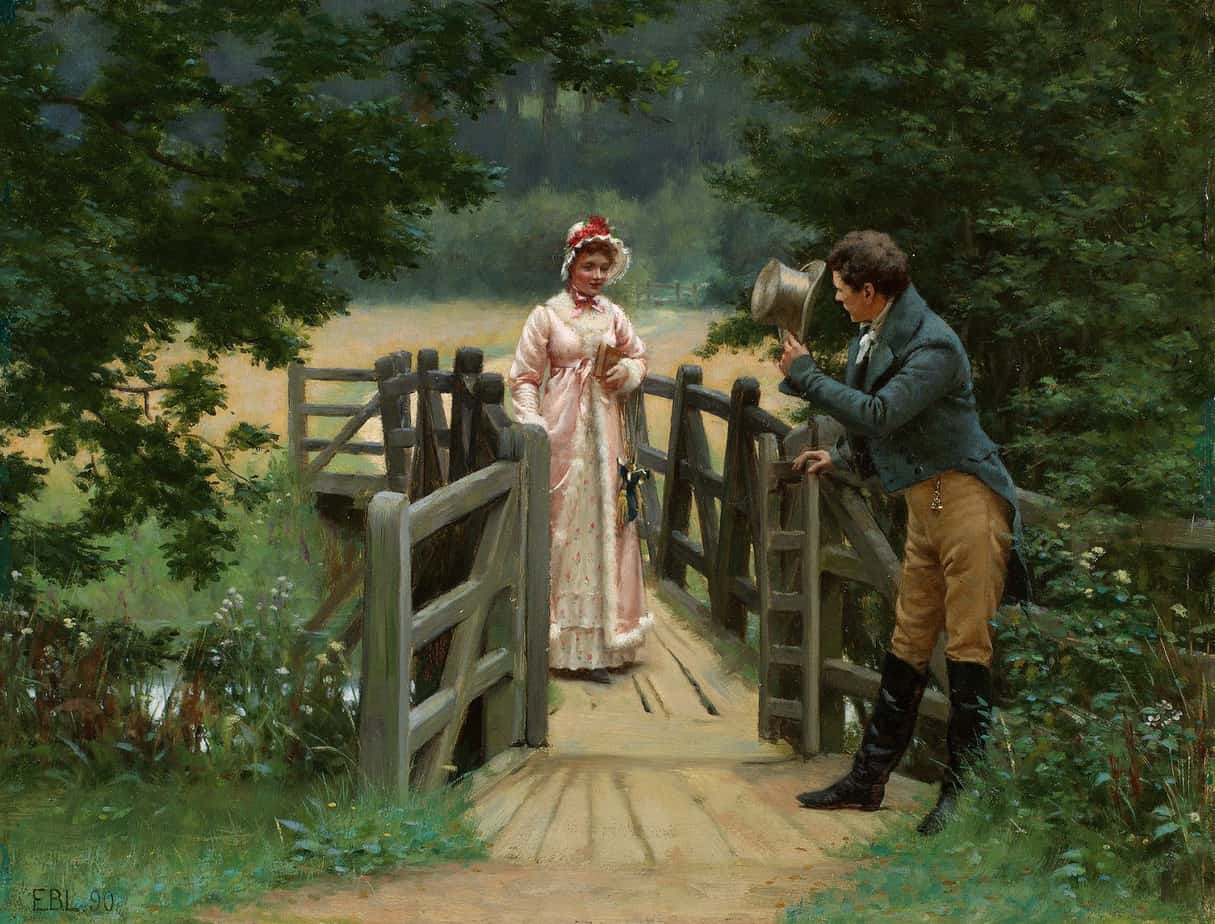
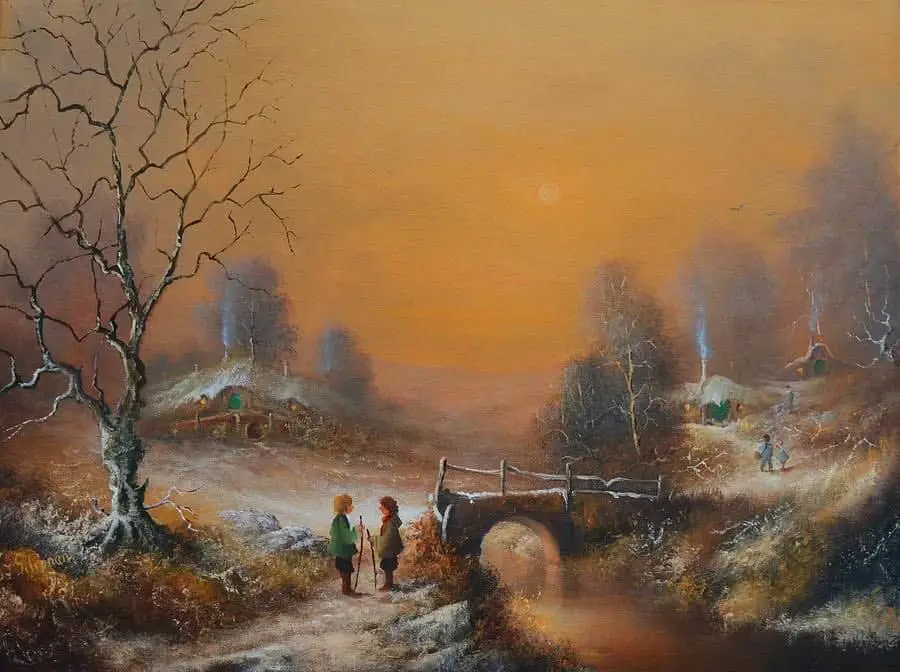
Here is another cosy bridge, often built like this one. A man and woman stand together atop of it. The bridge is an important means of bringing people together from one side of the village to the other.
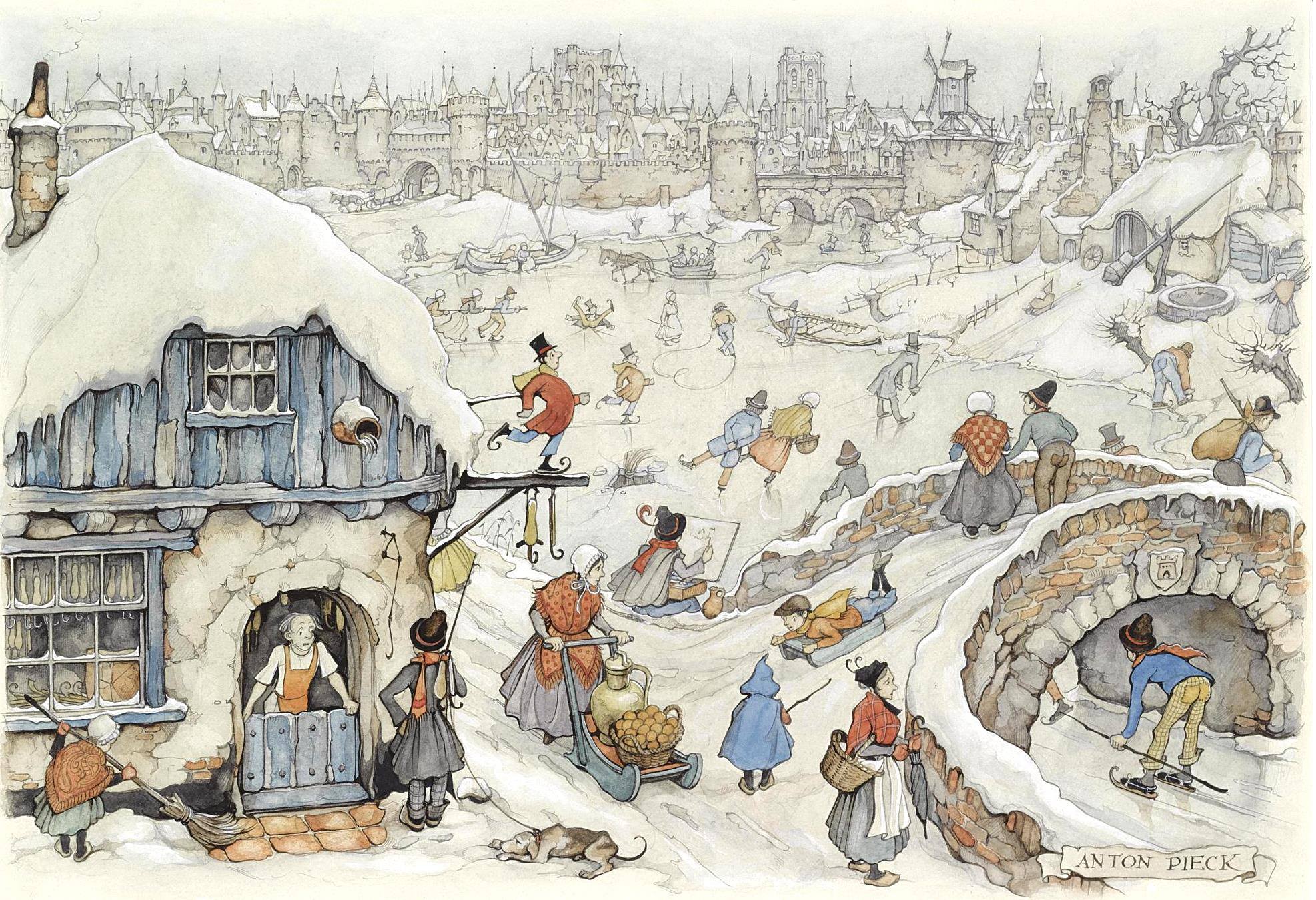
BRIDGE AS A LINK TO THE UNPERCEIVED
In many cultures the bridge symbolises the link between what can be perceived and what is beyond perception.
A Dictionary of Symbols by J.R. Cirlot
Likewise, the rainbow can’t be reached or touched. It exists in the nether-space between here and our imaginary other-world.
THE PONTIFEX
Since the bridge serves as symbolic link between the perceived and the unperceived, this leads naturally into the mystic senses.
Pontifex, (Latin: “bridge builder”, ) plural Pontifices, member of a council of priests in ancient Rome. These priests were called ‘bridge builders’ because they are thought to bridge two separate worlds (between God and man).
For the Israelites, the bridge was the sign of the Covenant between the Creator and His people.
In China, the bridge denotes the union of heaven and earth.
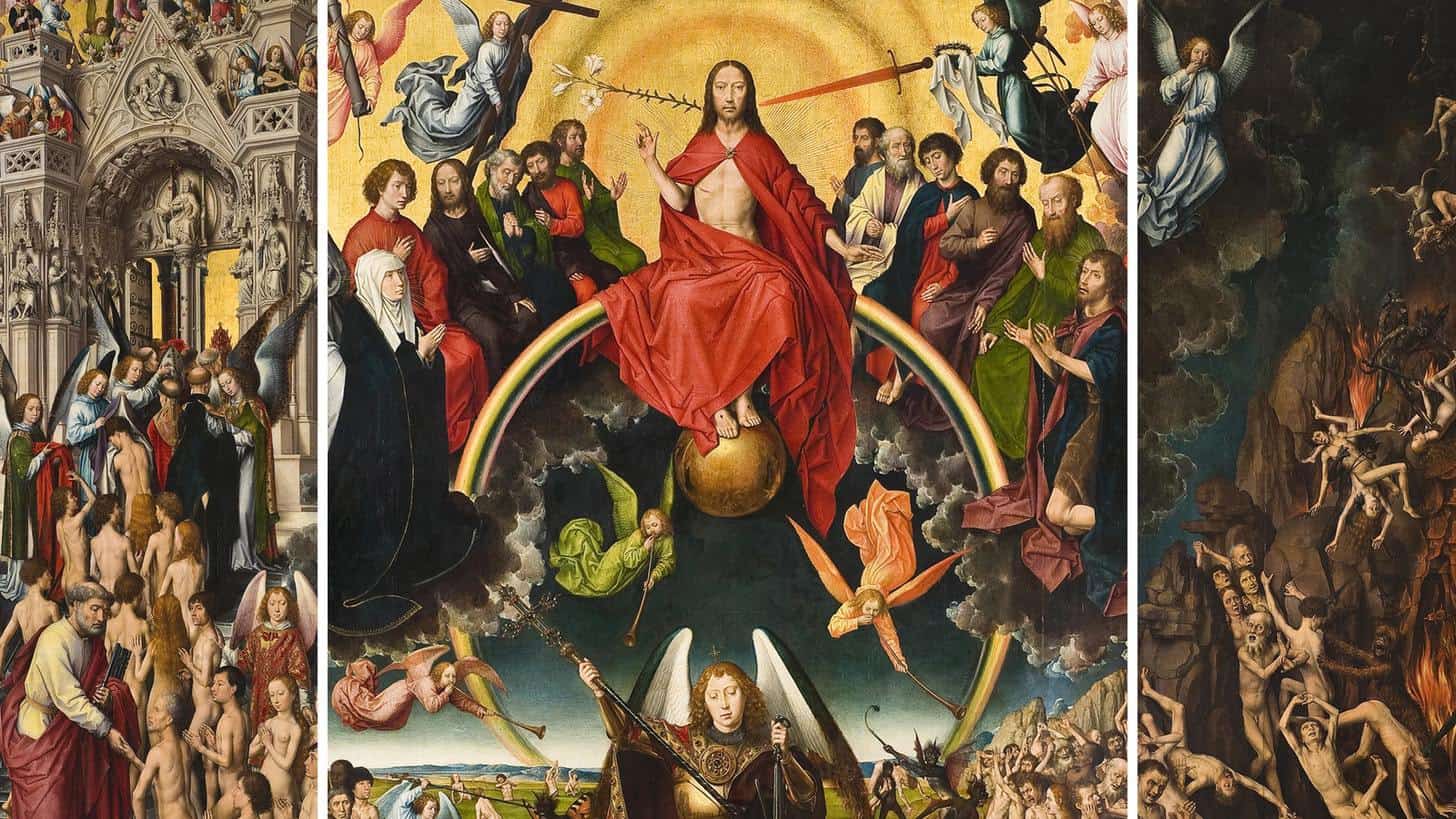
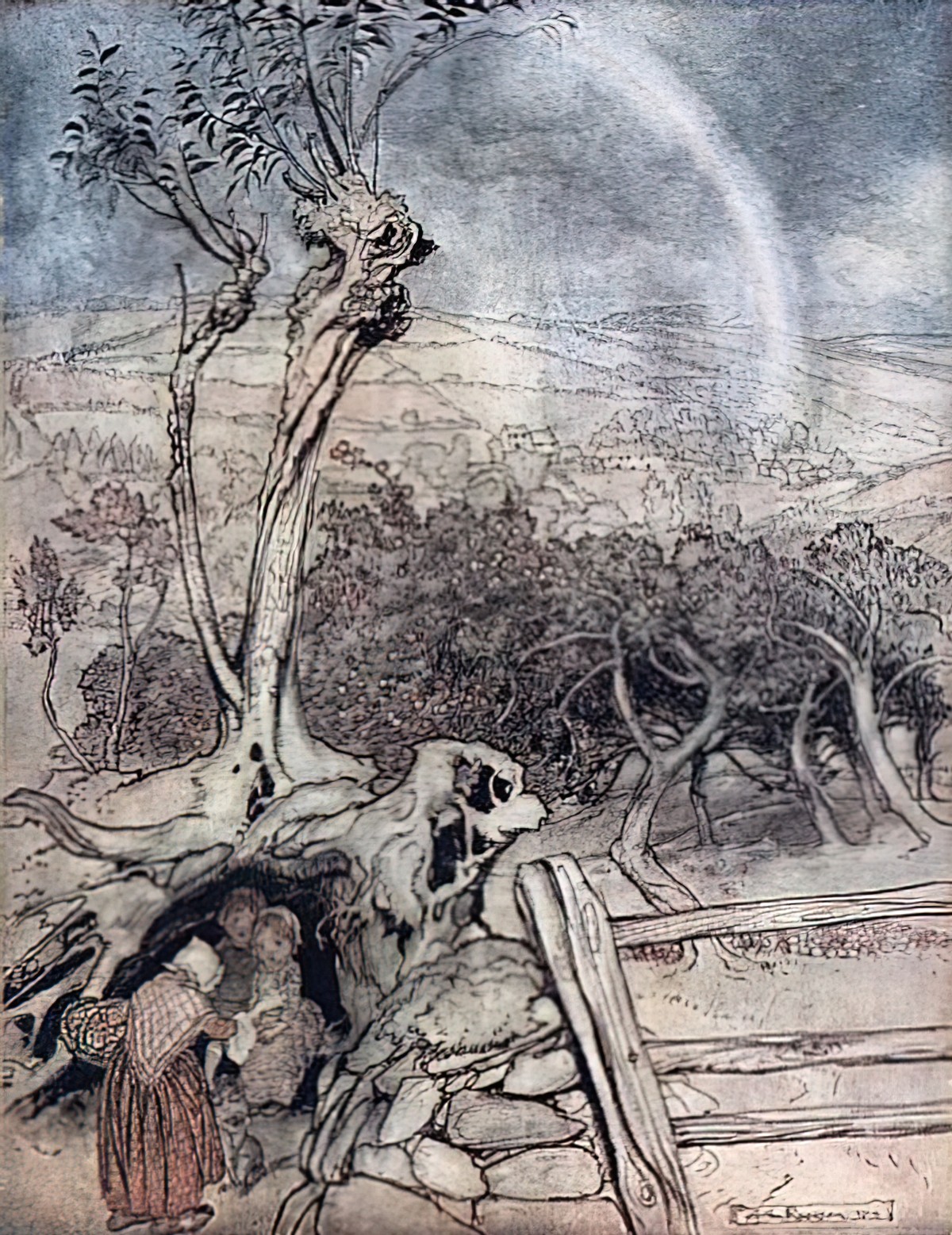
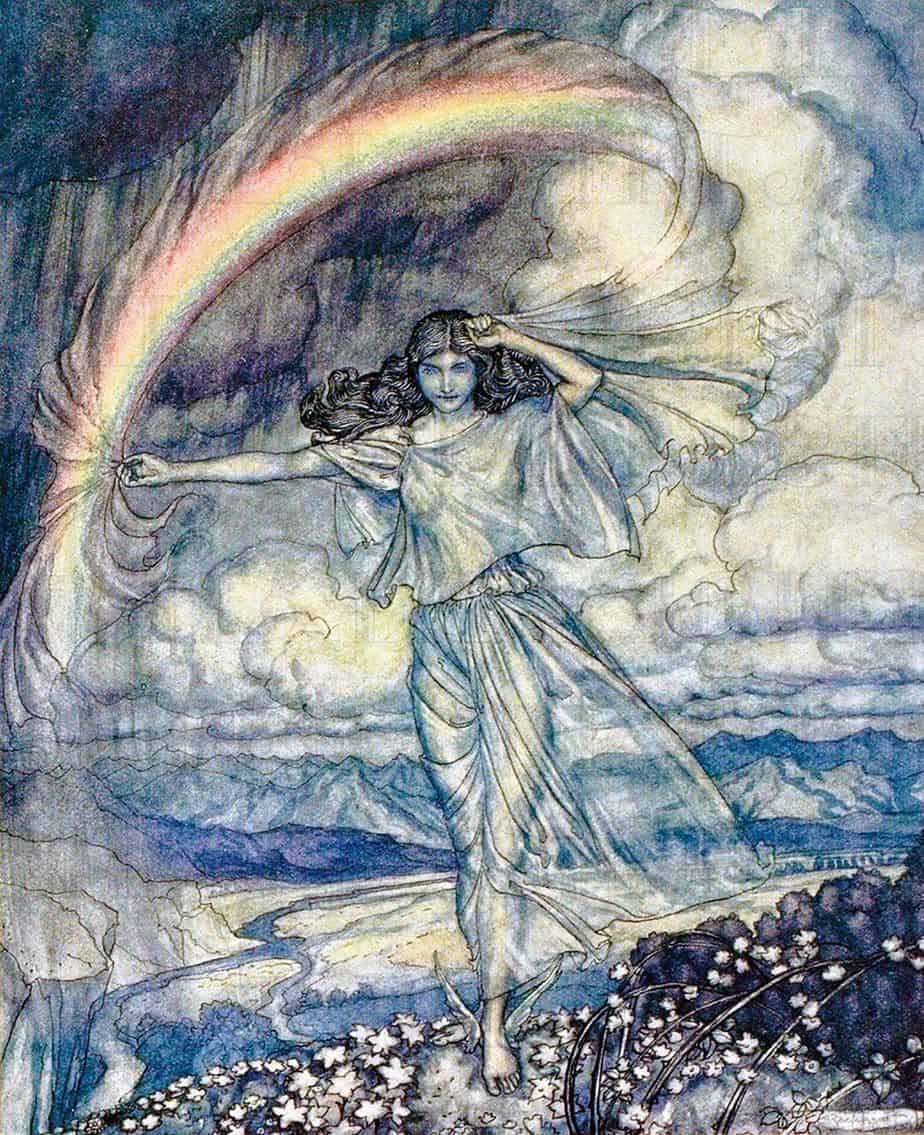
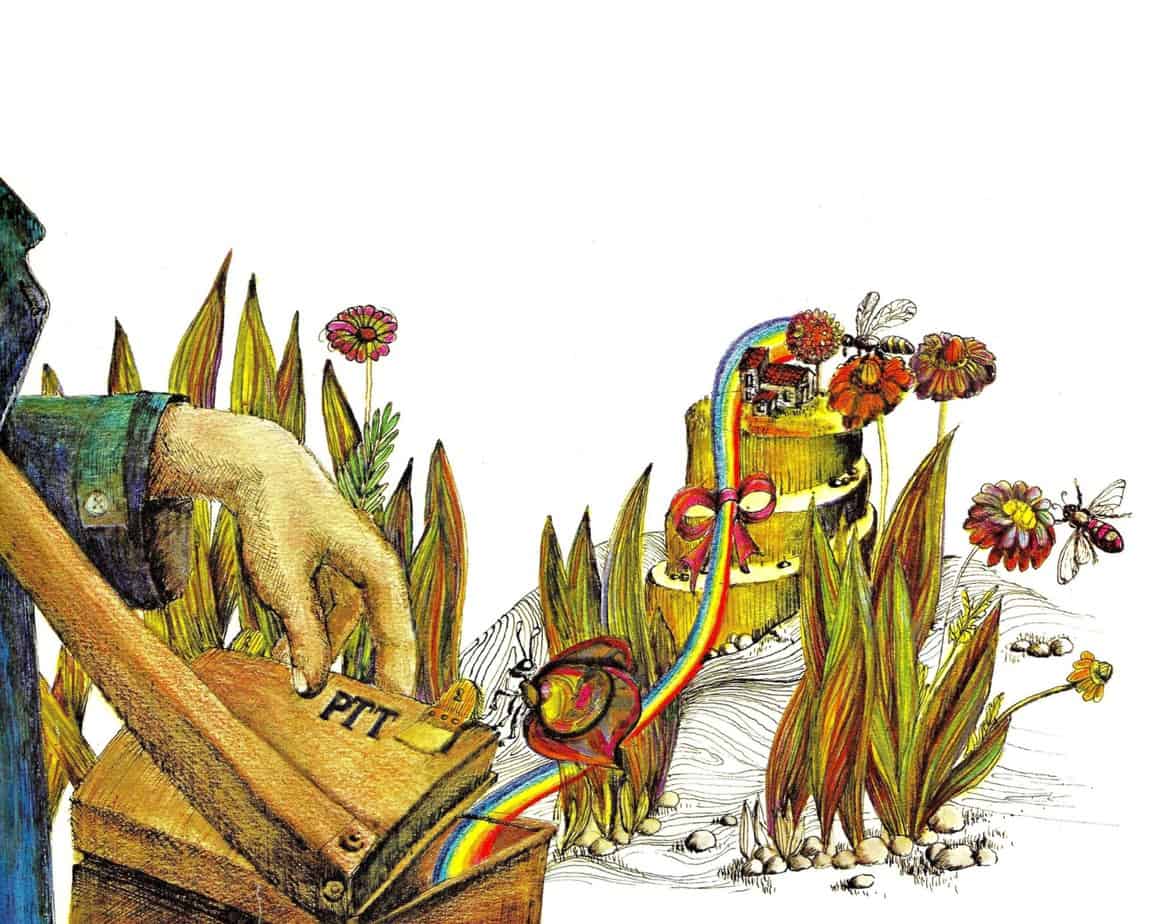
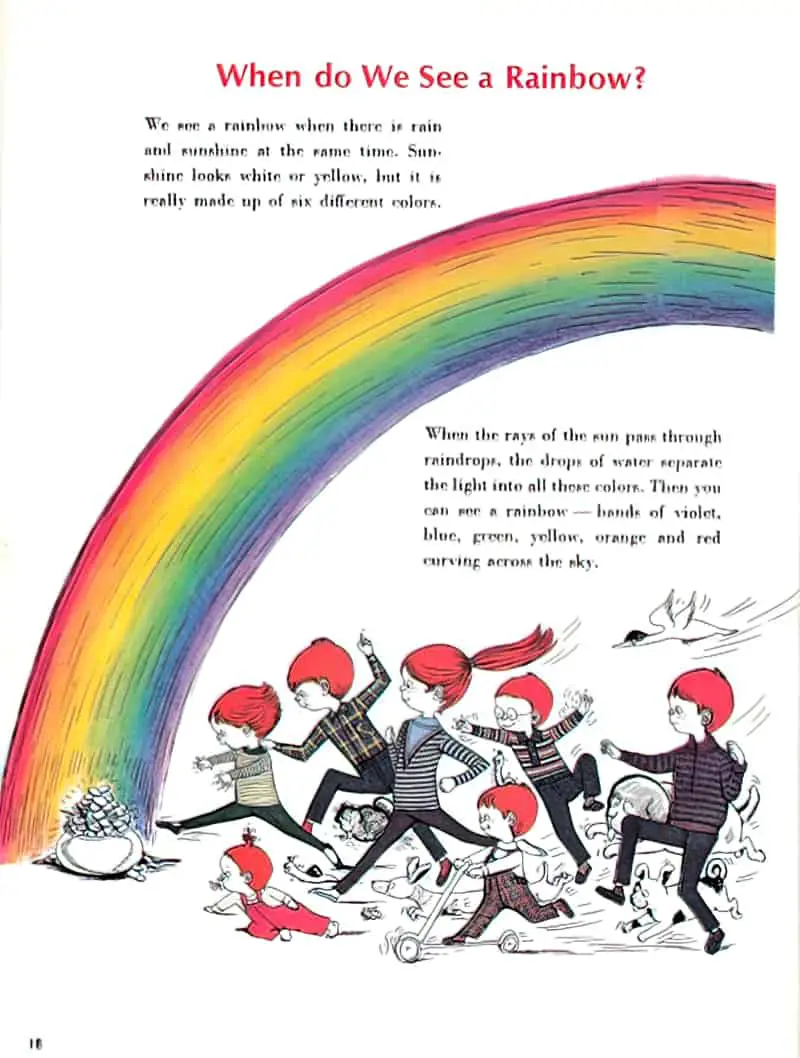
THE RAINBOW AND SEASON
In some cultures, rainbows are associated with certain times of year (rainy ones).
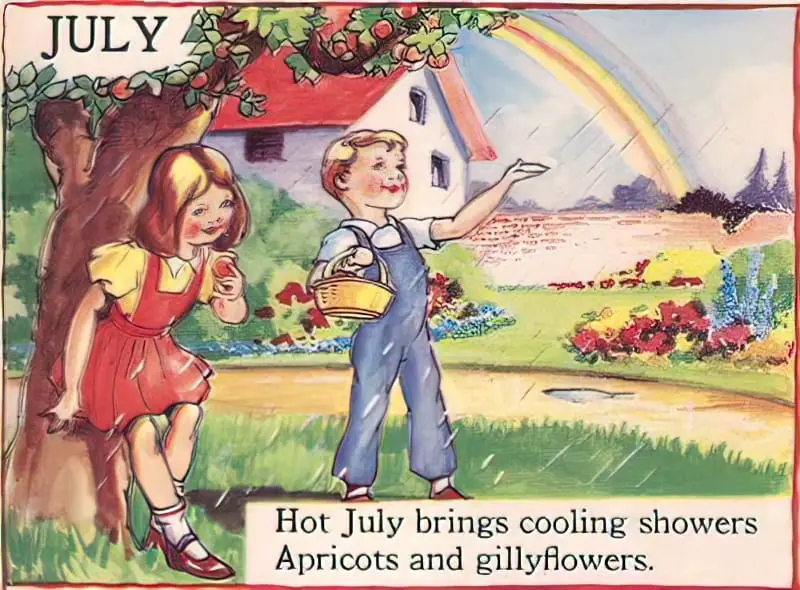
RAINBOW AS HOPE
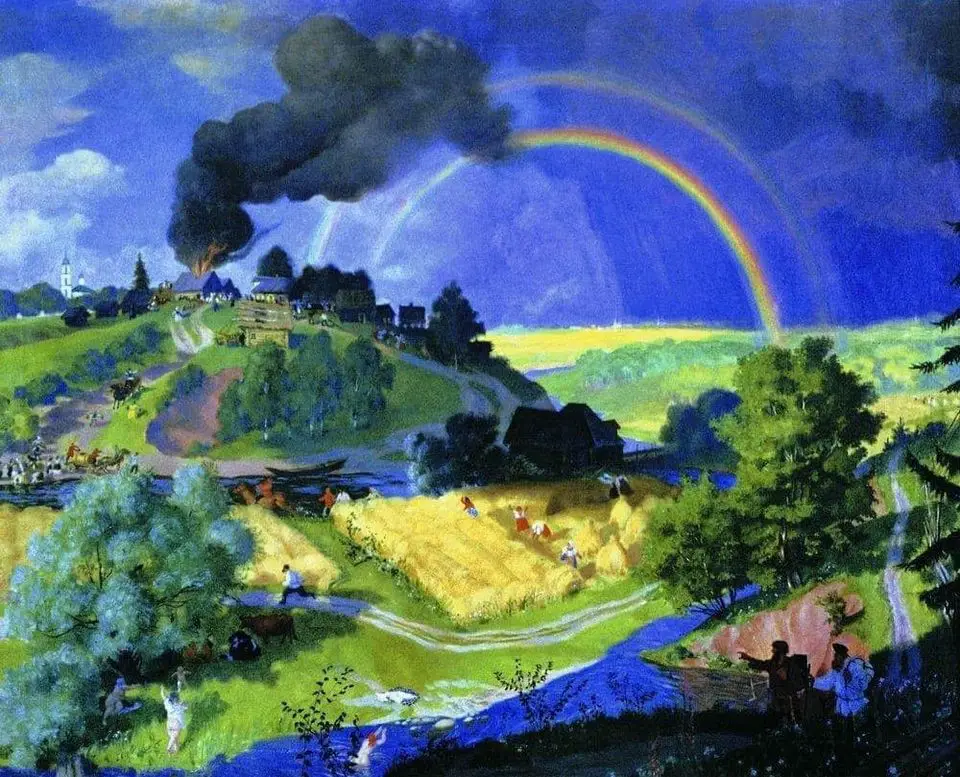
Ronald Searle created a series of illustrations for his wife Monica when she underwent chemotherapy.
On New Year’s Eve 1969, Monica Searle was diagnosed with a rare and virulent form of breast cancer. Each time she underwent treatment, Ronald produced a Mrs Mole drawing ‘to cheer every dreaded chemotherapy session and evoke the blissful future ahead’. Filled with light and illuminated in glowing colours, the drawings speak of love, optimism and hope. Like the mediaeval illuminated manuscripts such as the 15th-century Les Tres Riches Heures du Duc de Berry, to which the title of this book refers, the 47 drawings are on an intimate scale and were never intended for publication. The story of Monica’s survival against the odds and the part played by the encouragement of her husband will move many people who have either experienced cancer for themselves or been affected through a close family member of friend.
This is one of them.
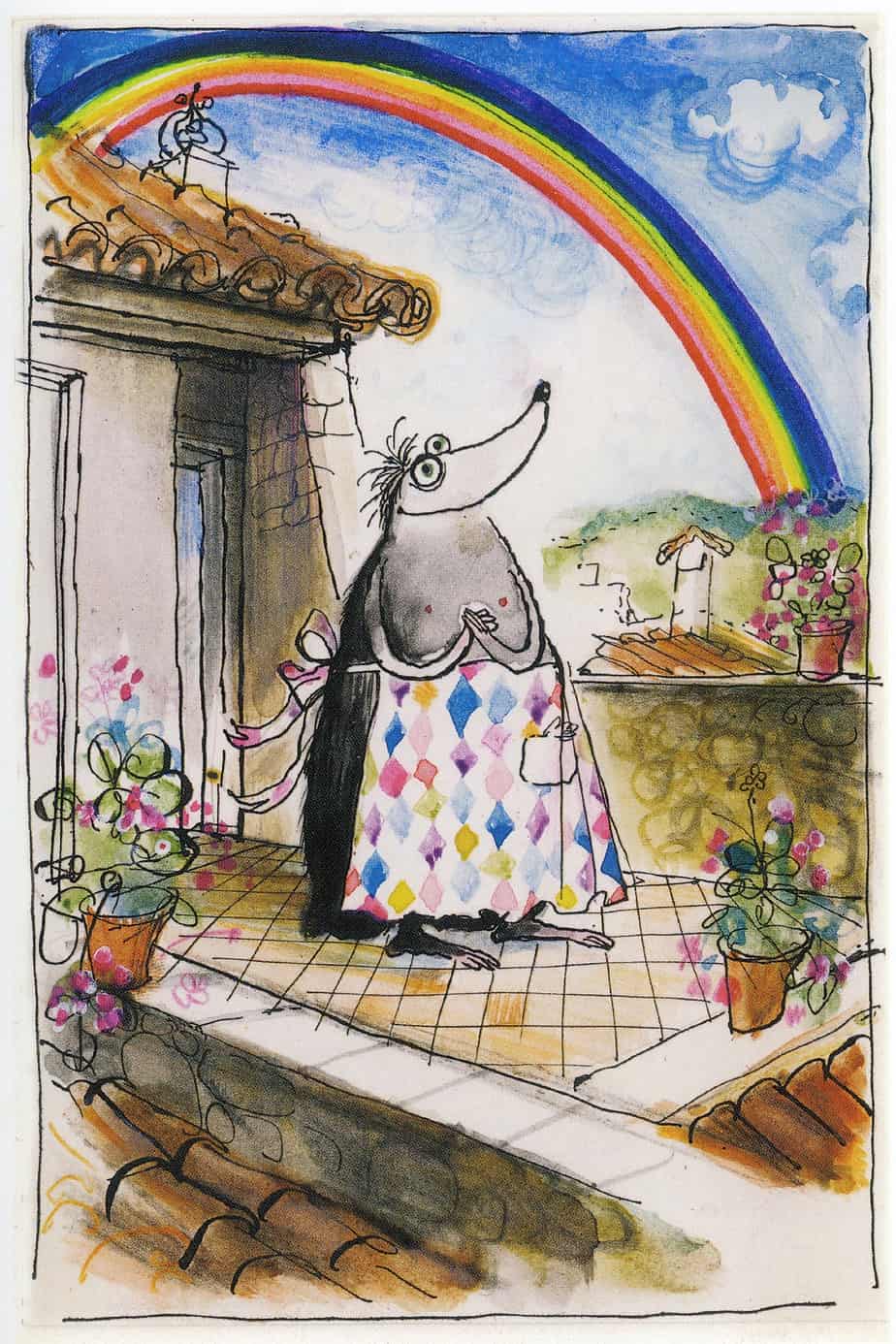
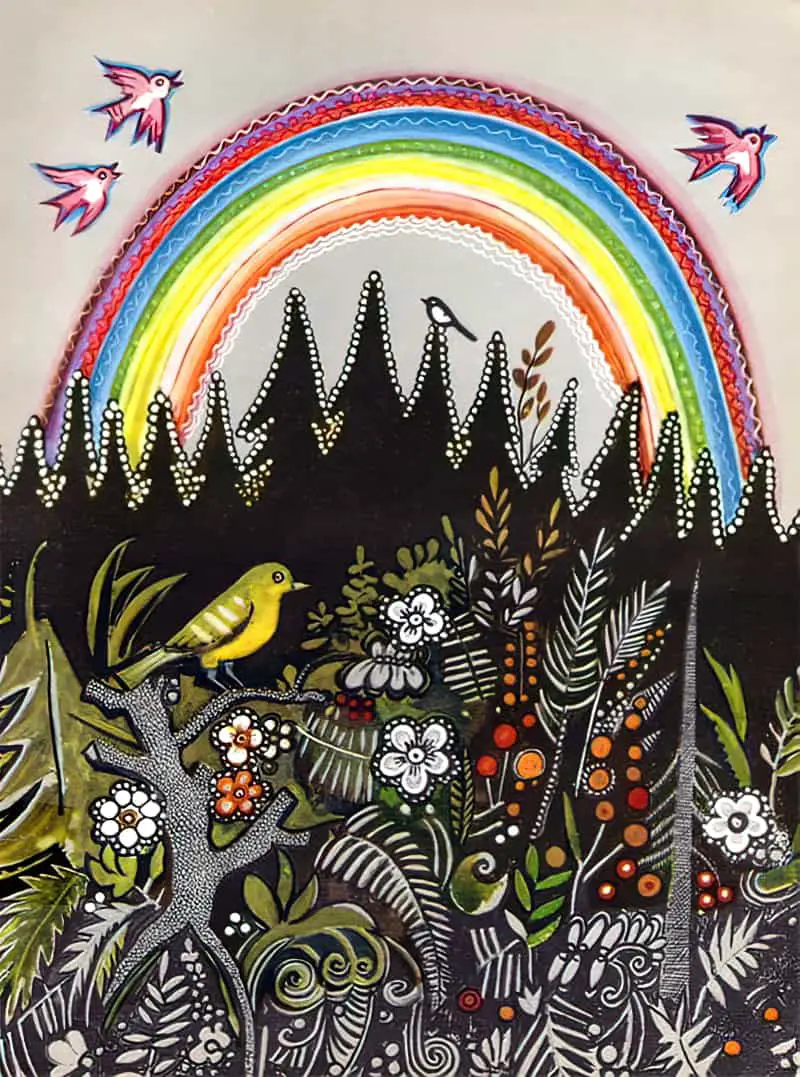
The Catholic church uses a rainbow as a symbol of the pontificate, an excellent visual representation of how bridges and rainbows are often linked. This comes from Ancient Greece.
For the Greeks Iris was a messenger of the gods, also connected to rainbows. Again, Iris ‘bridges’ that divide between the real world and the spiritual realm.
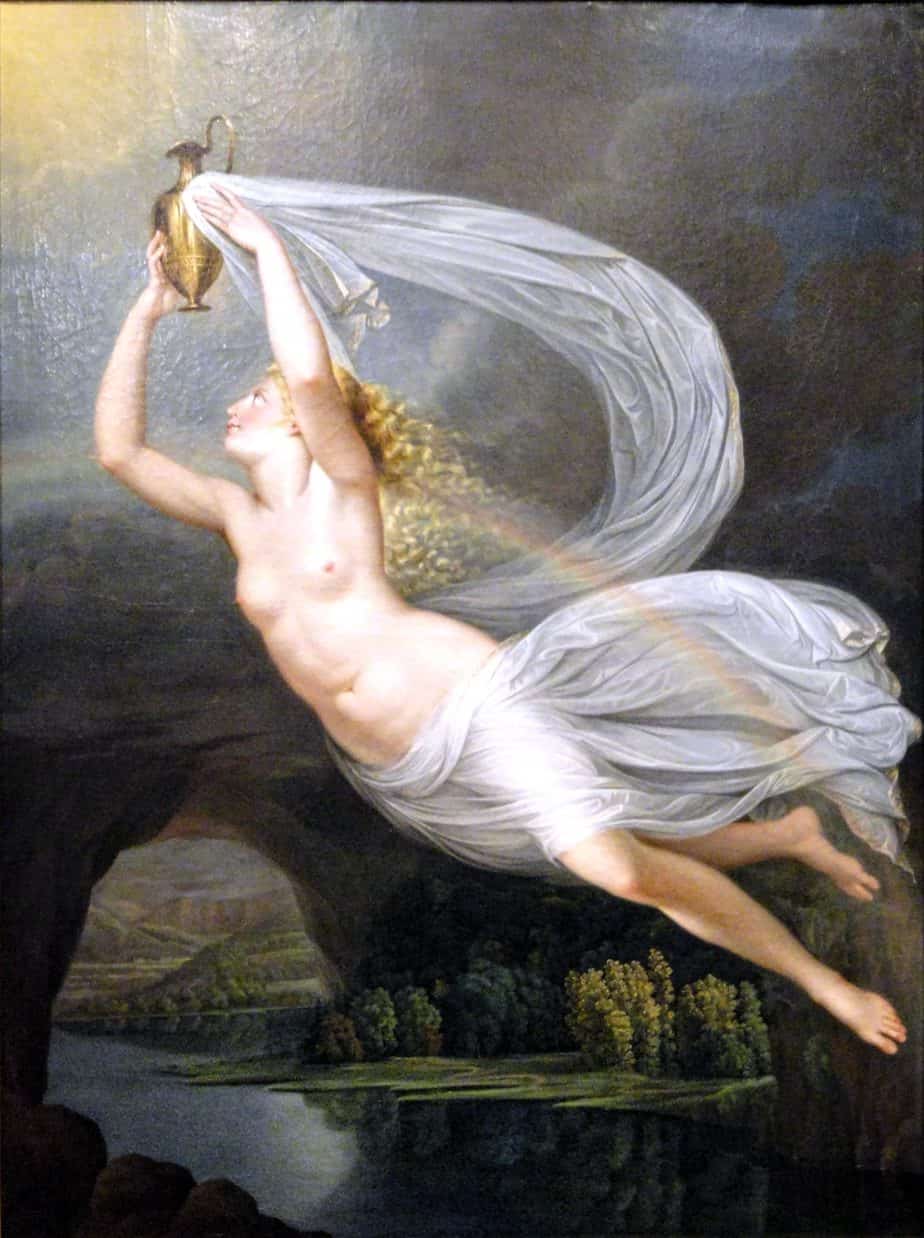
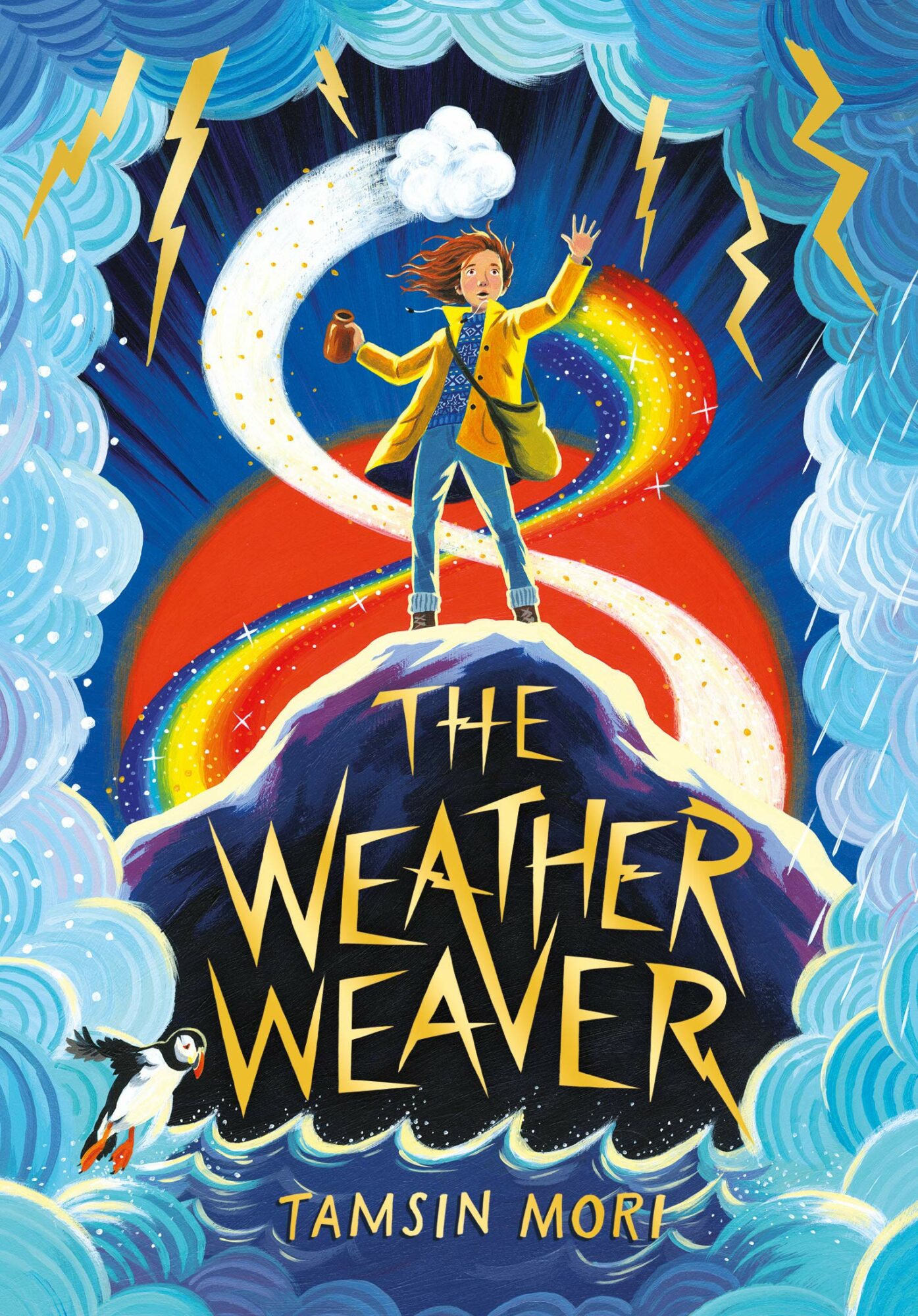
HIGH BRIDGES, DANGER AND FEAR OF DEATH
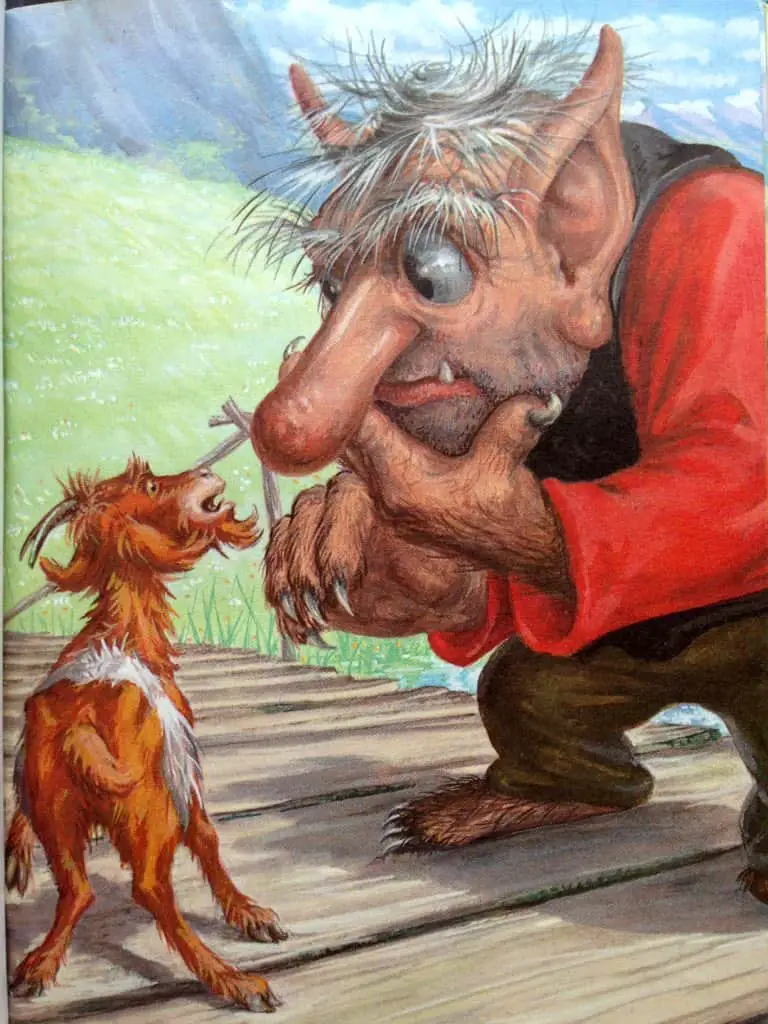
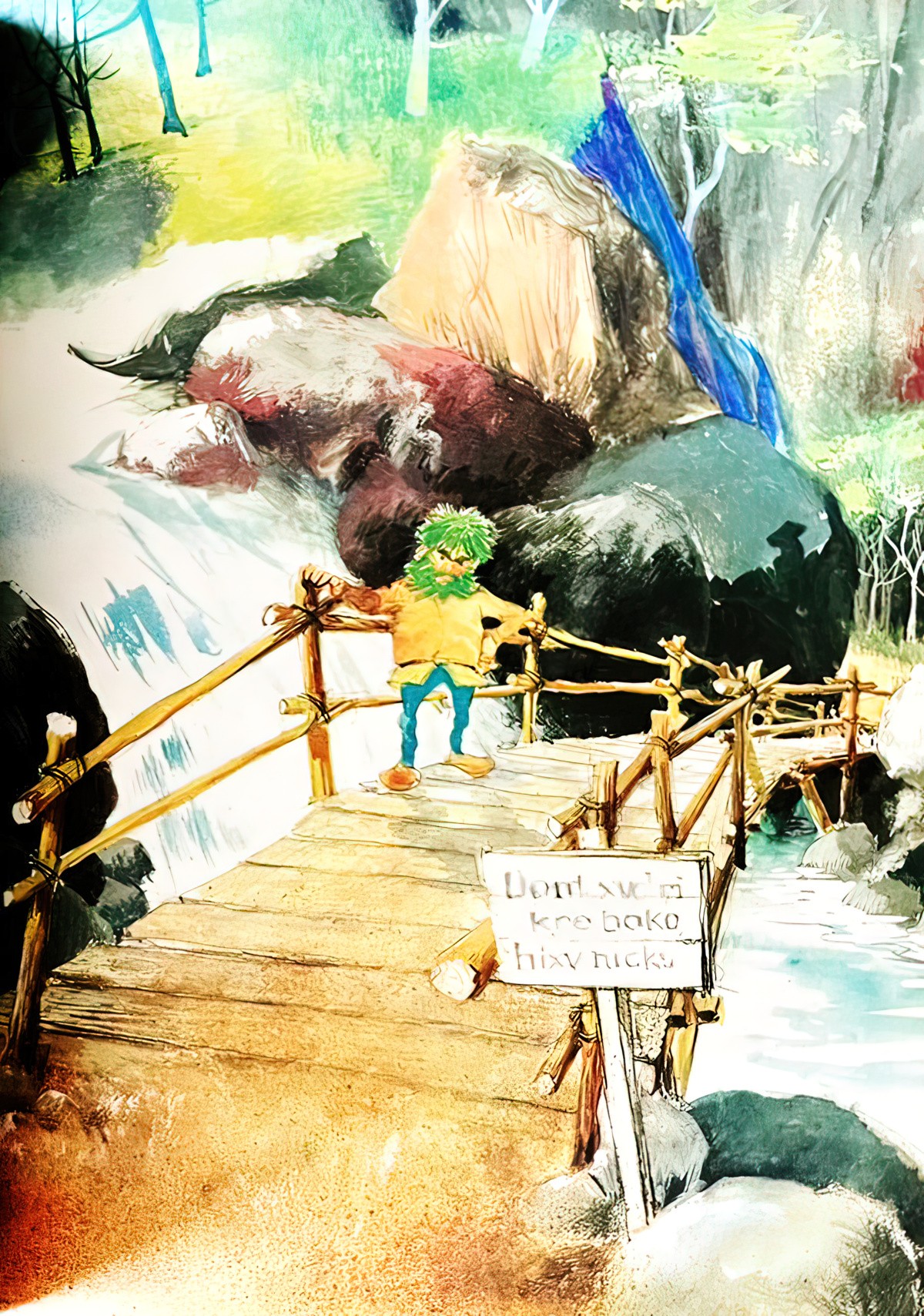
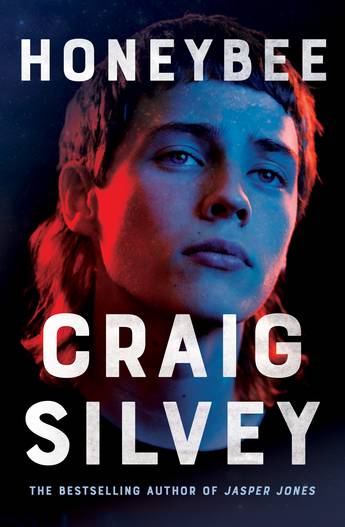
Late in the night, fourteen-year-old Sam Watson steps onto a quiet overpass, climbs over the rail and looks down at the road far below.
At the other end of the same bridge, an old man, Vic, smokes his last cigarette.
The two see each other across the void. A fateful connection is made, and an unlikely friendship blooms. Slowly, we learn what led Sam and Vic to the bridge that night. Bonded by their suffering, each privately commits to the impossible task of saving the other.
Honeybee is a heart-breaking, life-affirming novel that throws us headlong into a world of petty thefts, extortion plots, botched bank robberies, daring dog rescues and one spectacular drag show.
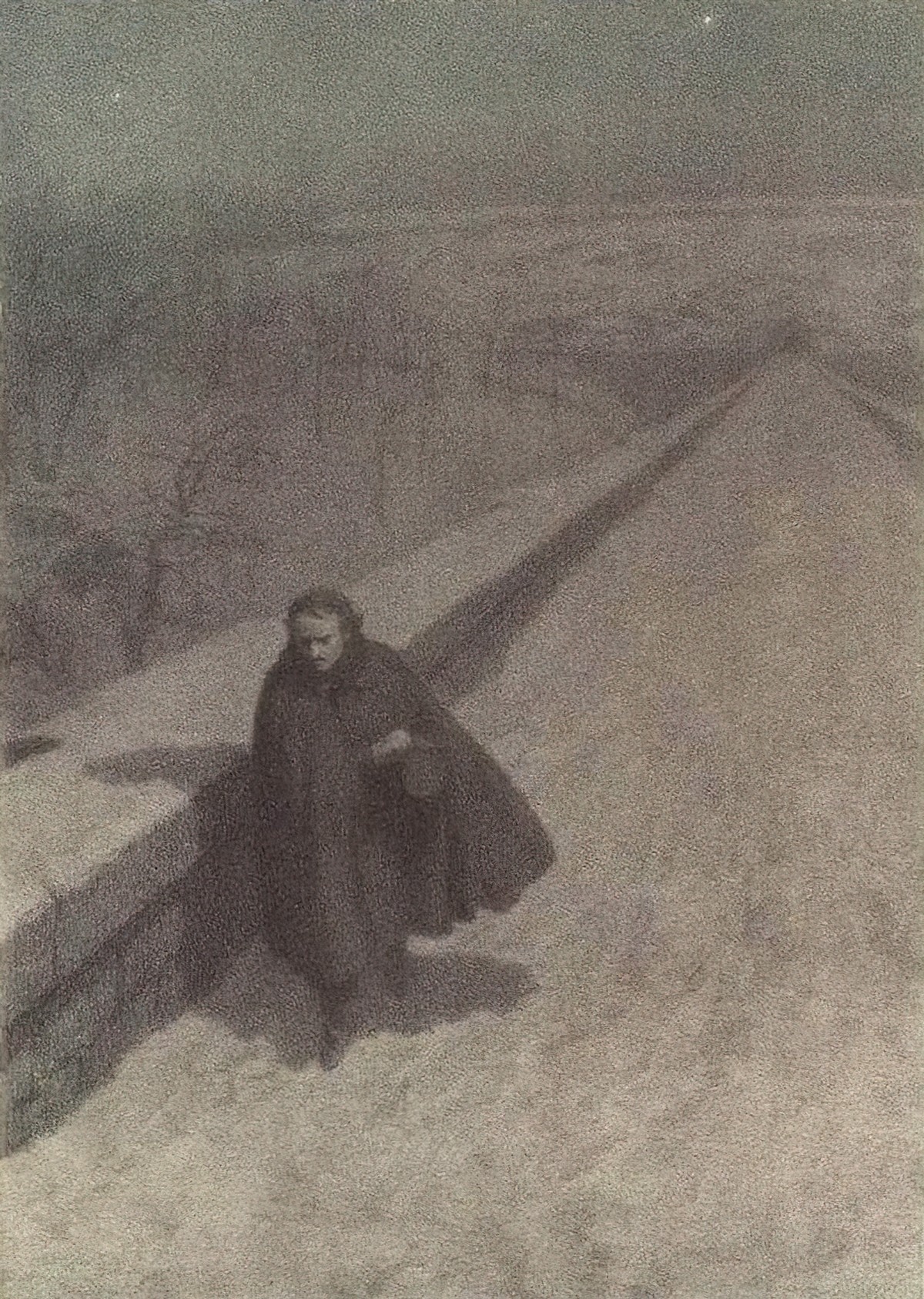
If you’ve ever used a rope bridge you’ll understand how the experience is basically spatial horror.
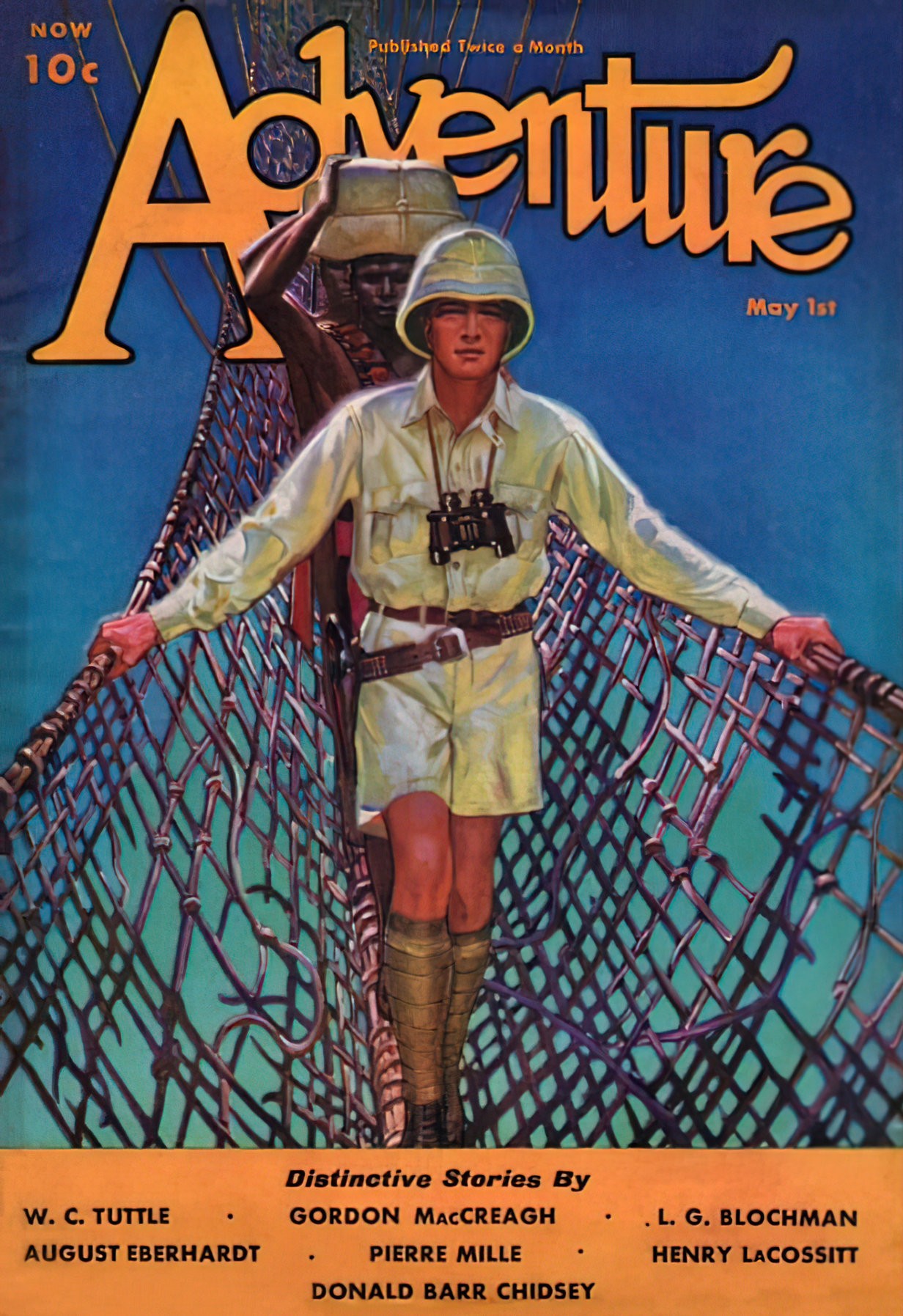
Forget the storm, bridges can function as monsters in their own right.
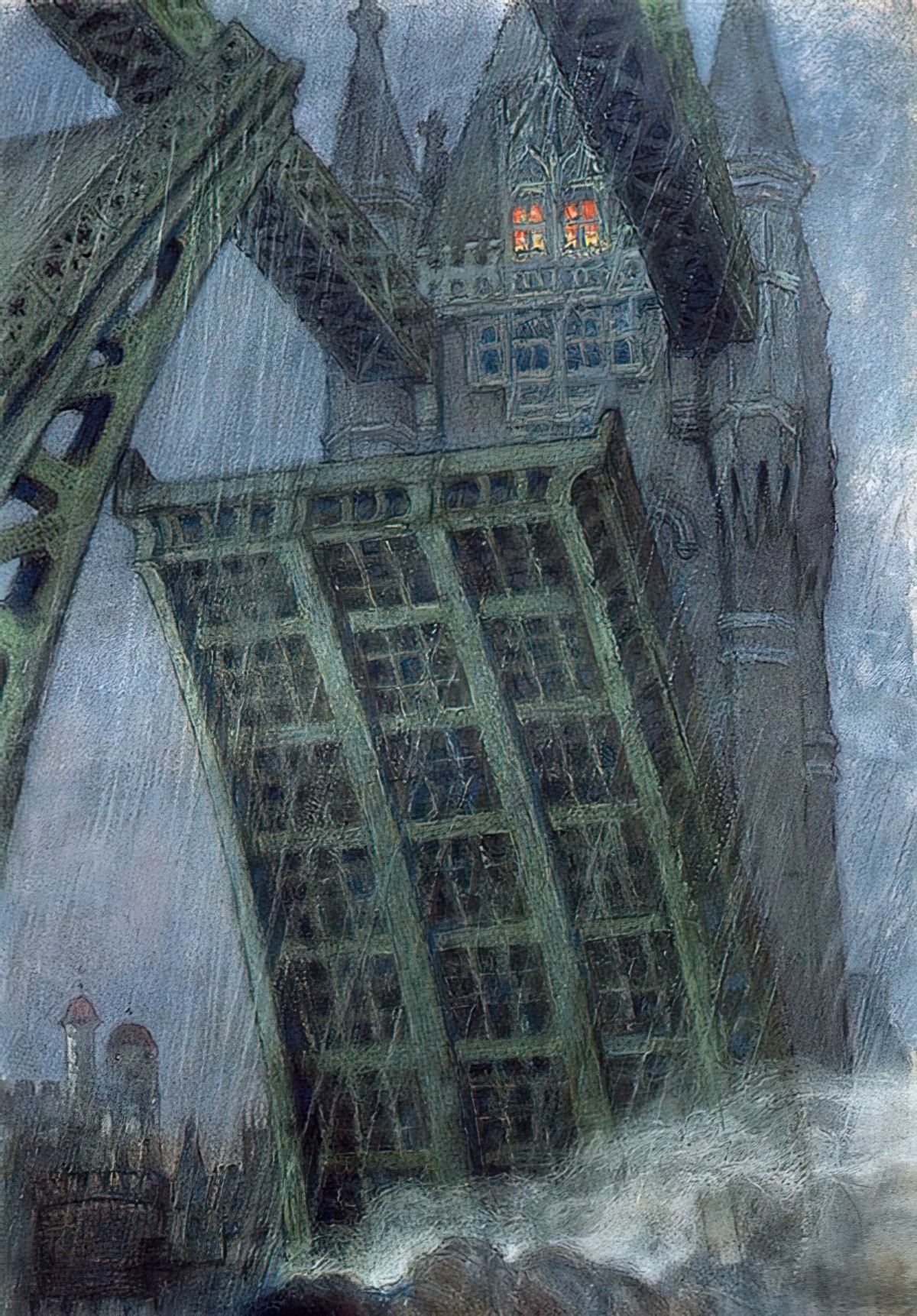
And the arch-shaped bridge isn’t always cosy.
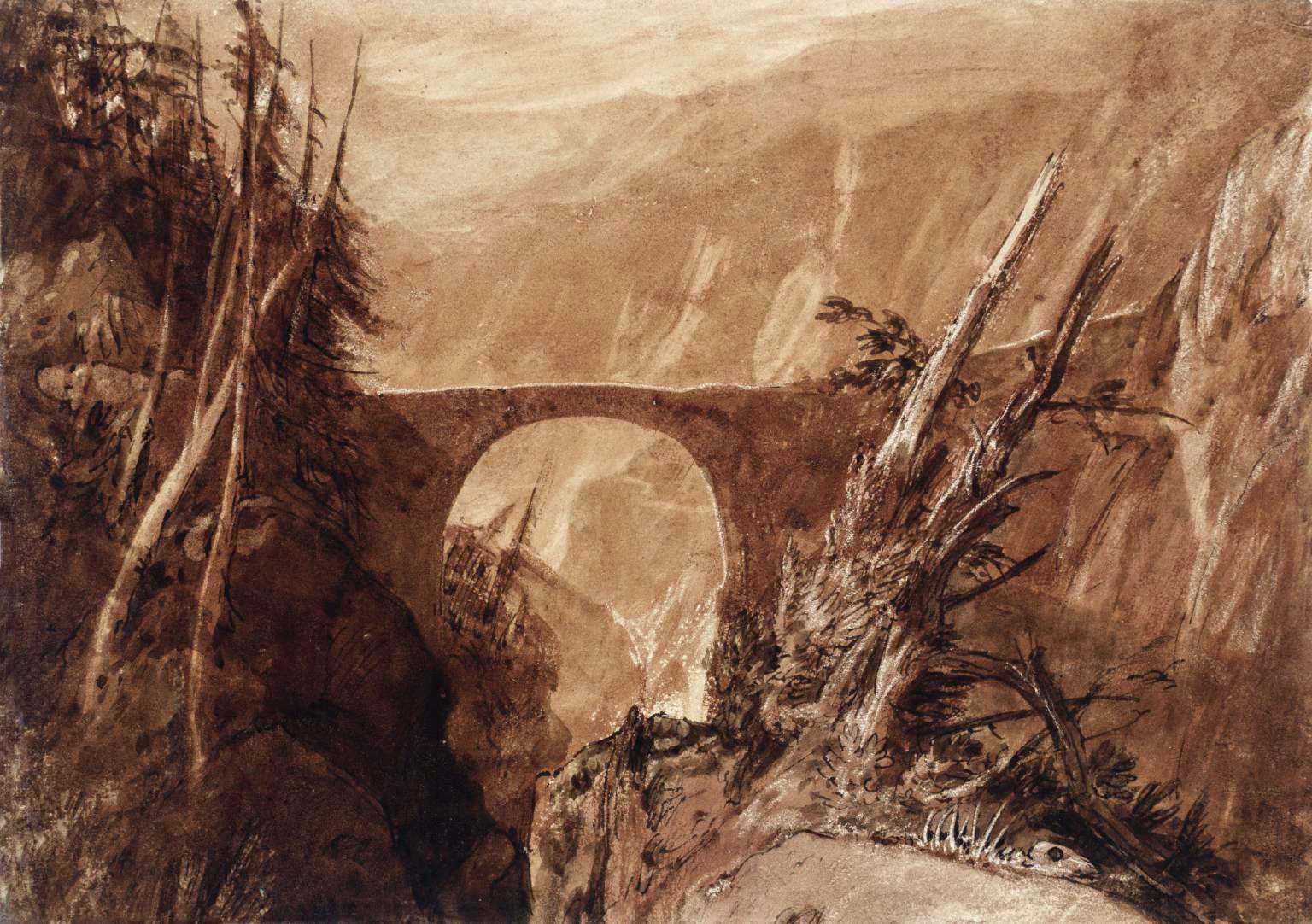
Would you be perfectly at ease scampering across this bridge?
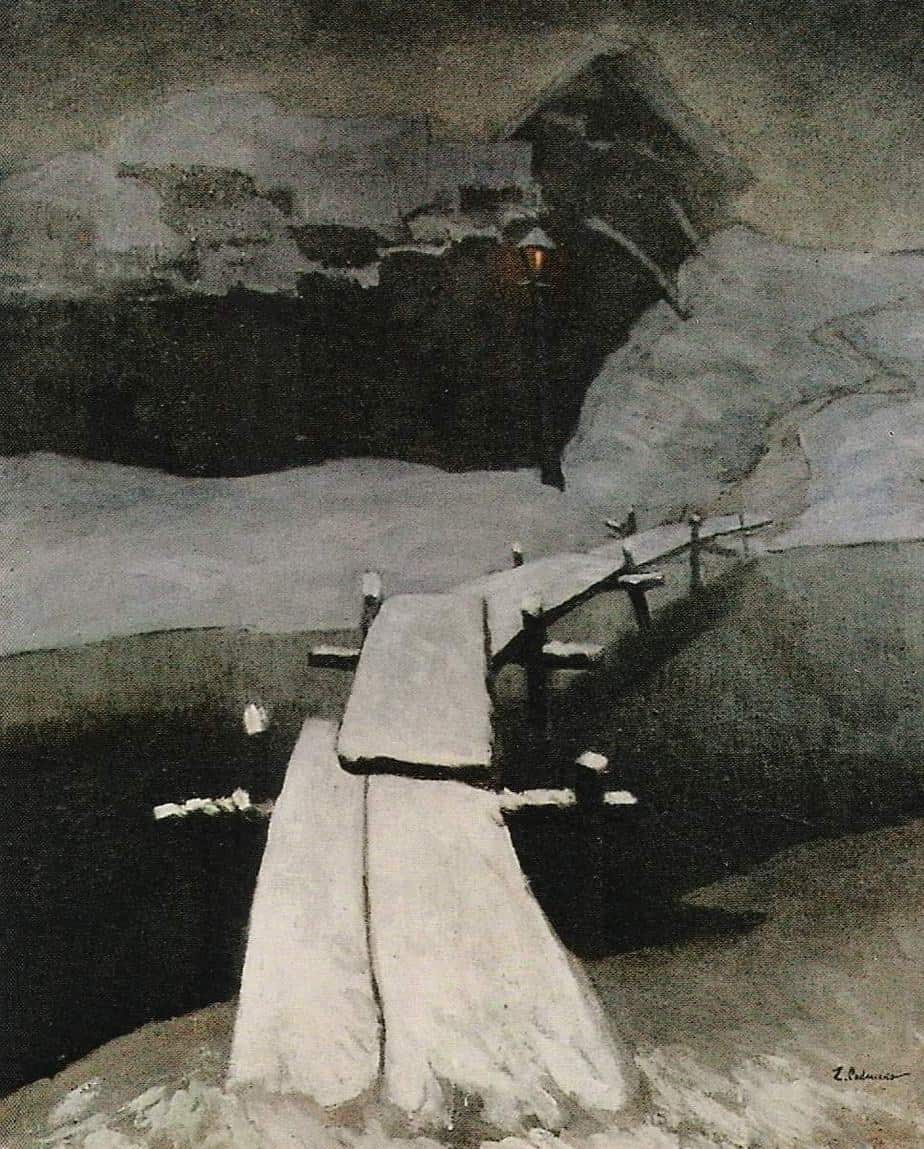
This stranger doesn’t look like he’s about to offer assistance.
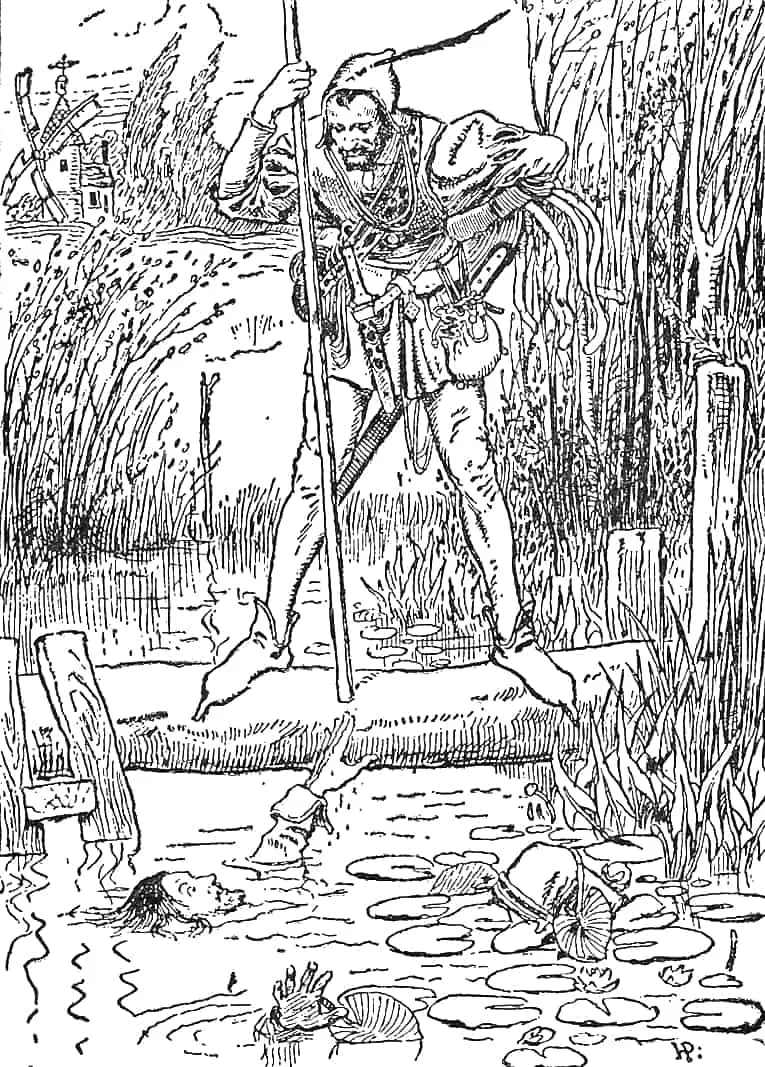
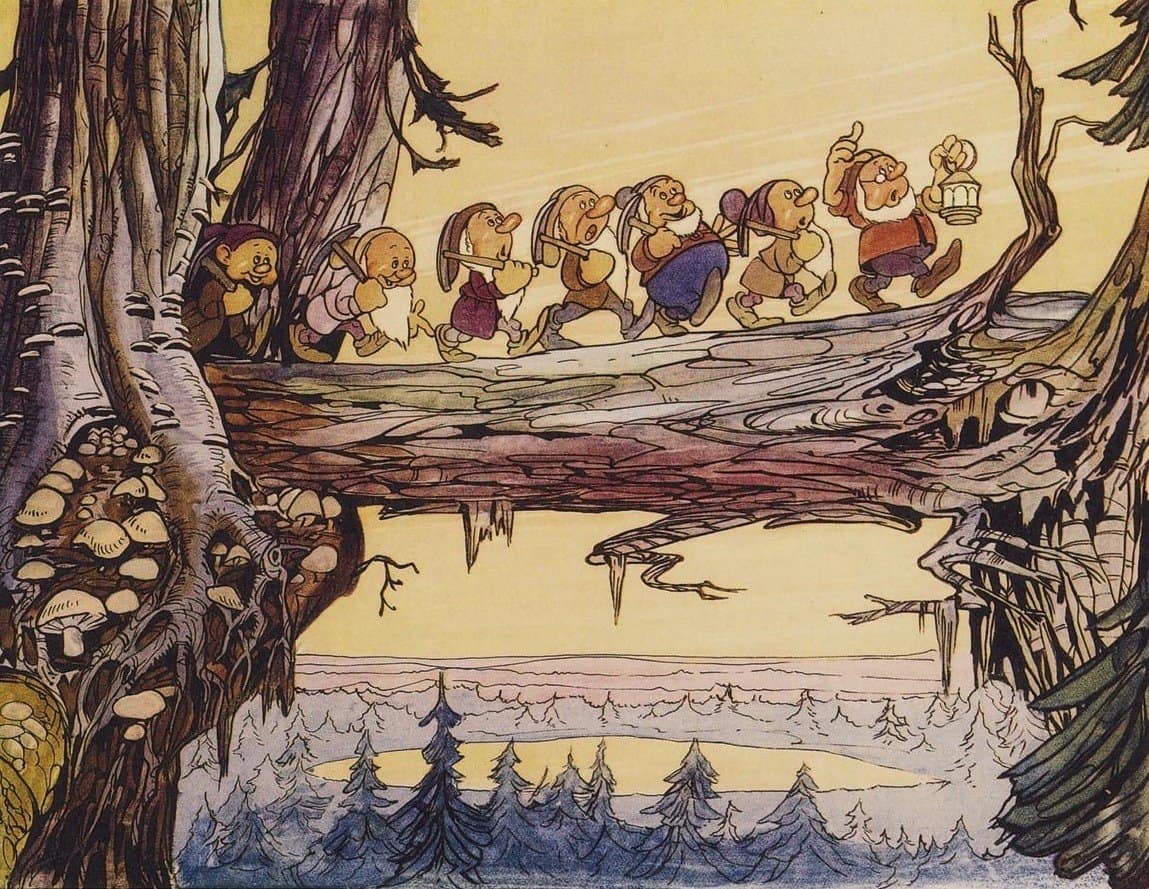
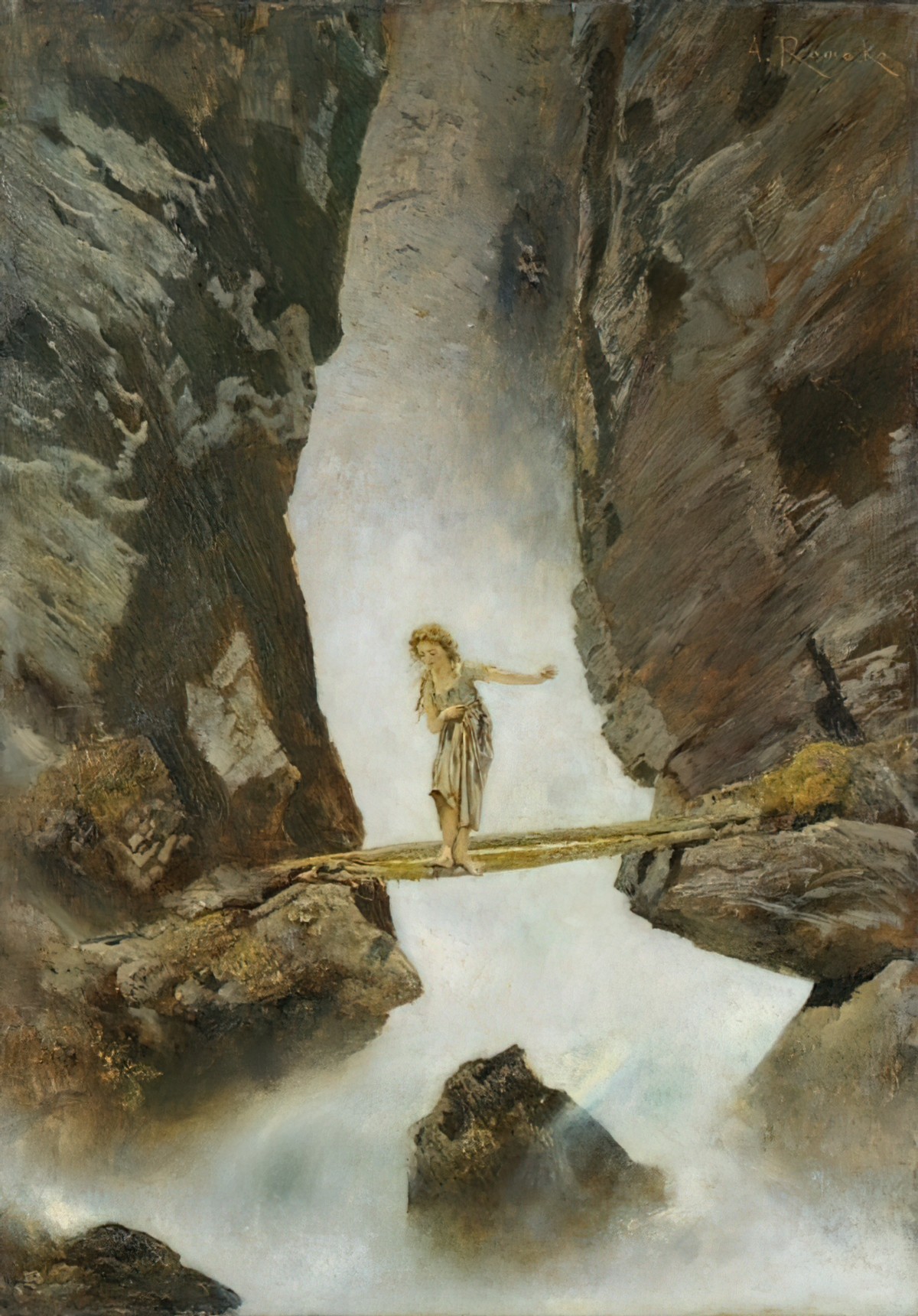
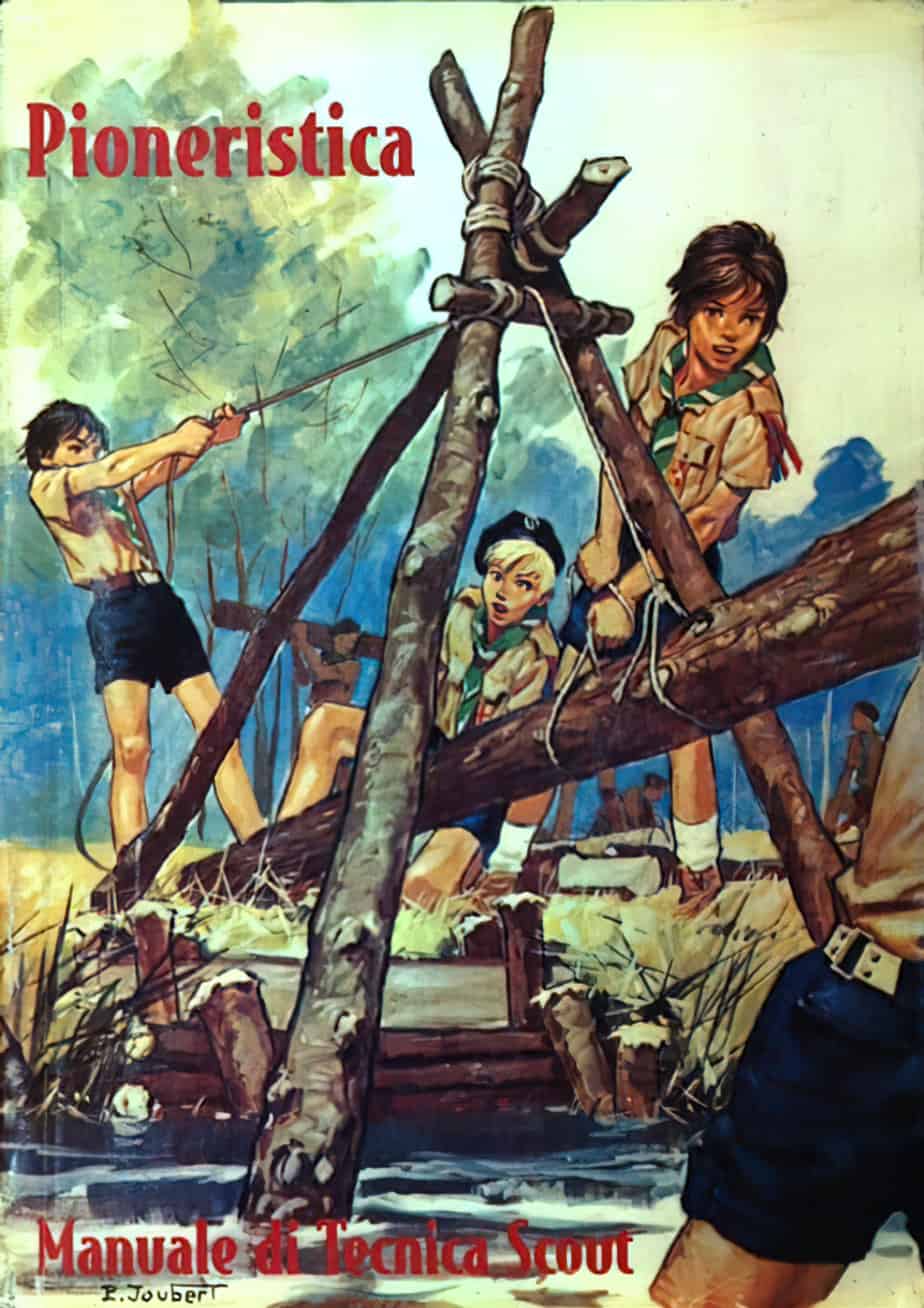
THE BRIDGE AND MYTHIC JOURNEYS
Even cosy journeys often contain the near-death experience of a bridge. When characters in children’s book look out of a window you know they’re thinking about leaving. If they’re sitting on or swinging on the garden fence? Same. When they cross the bridge, they are moving from symbolic civilisation into the symbolic forest, where they are entirely on their own.
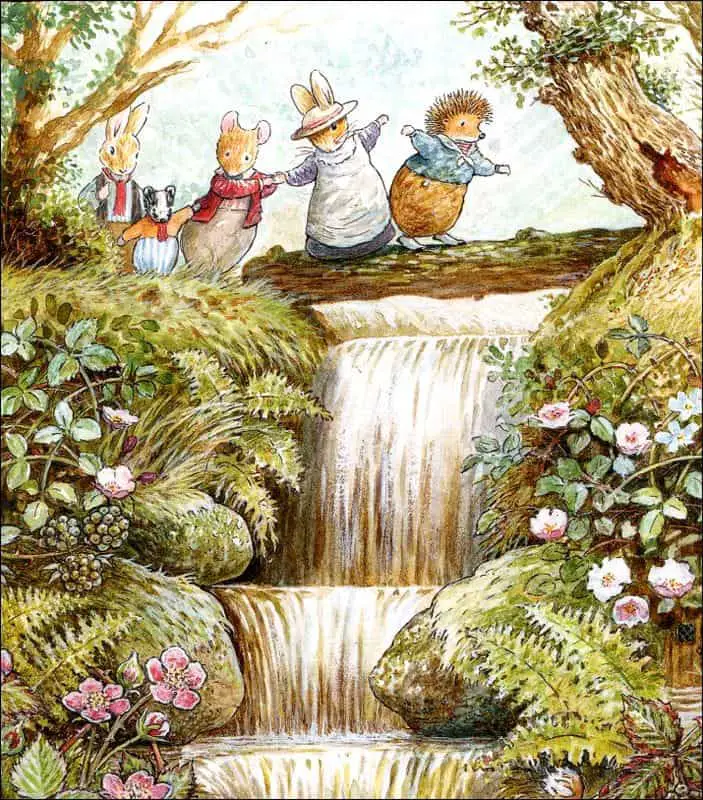
BRIDGES AND SAFETY
There may also be a bridge on the other side of danger, transporting characters back to safety.
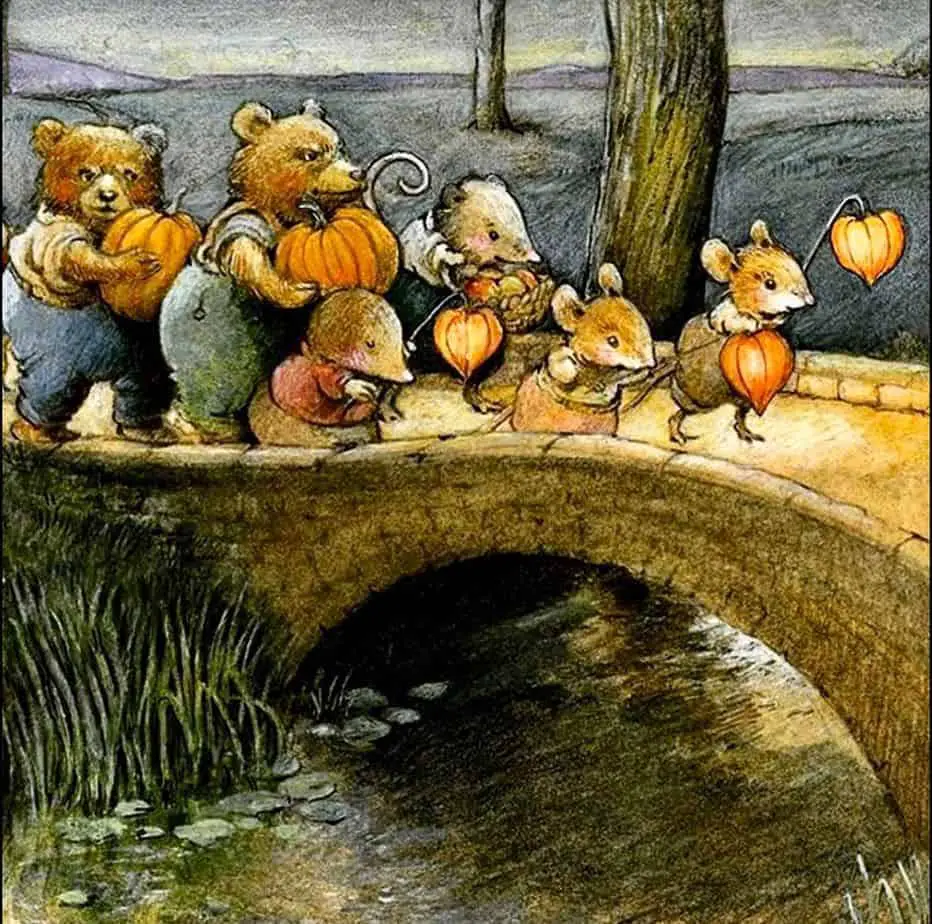
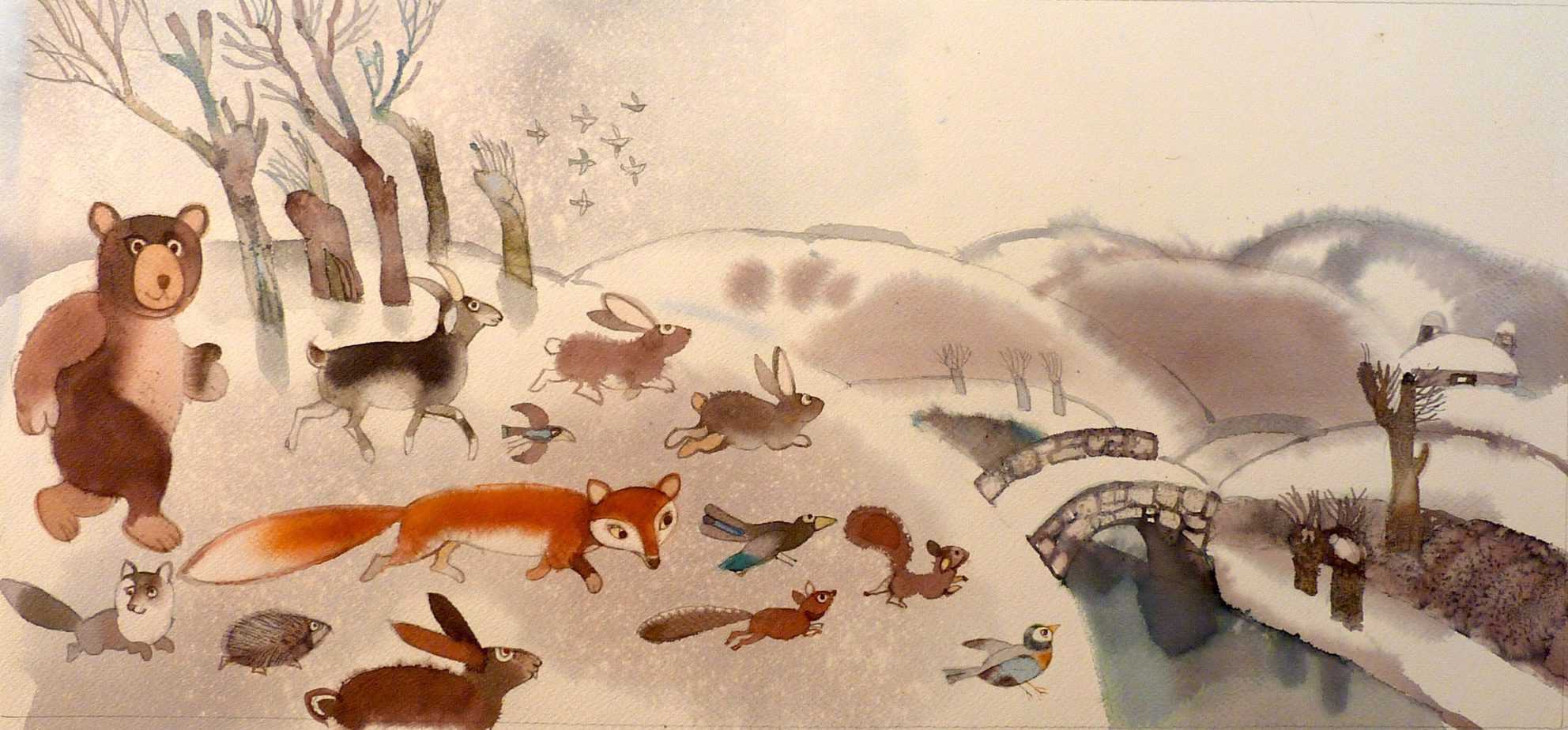
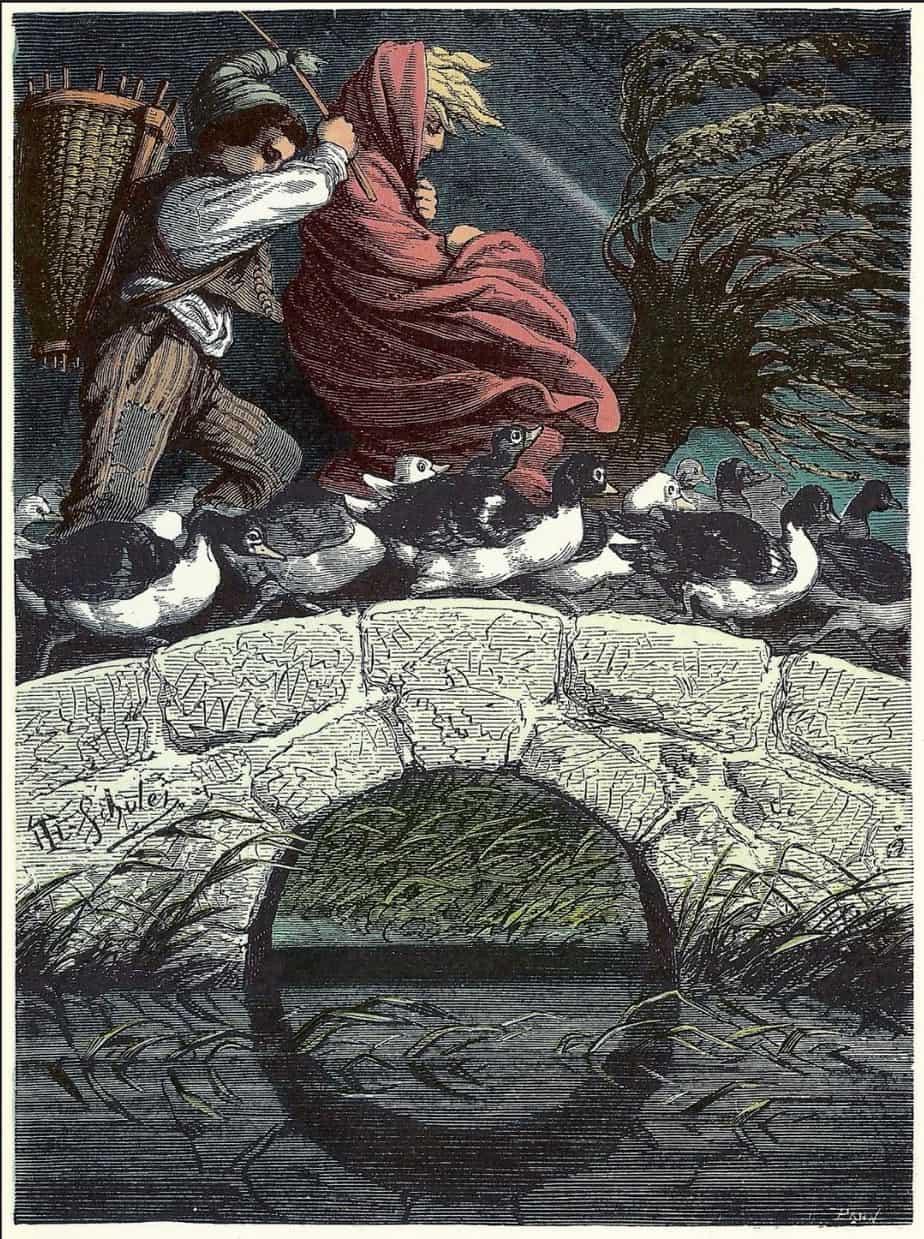
In the Anglosphere, journeys take place from left to right. But the images below show characters walking in the opposite direction, defying the natural movement of the eyes. Something has happened to turn them ‘back’.
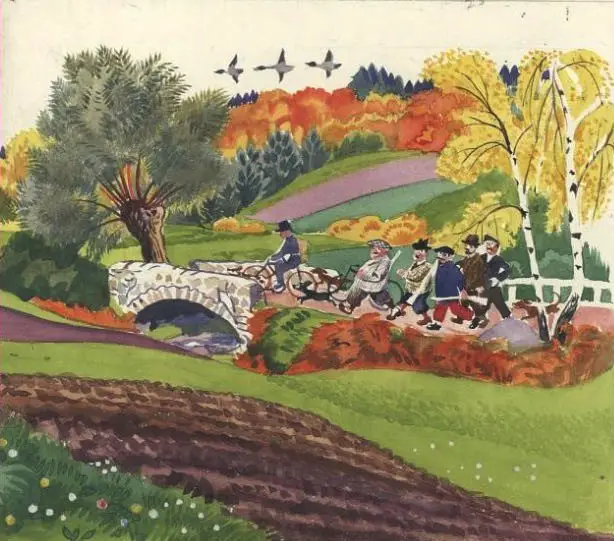
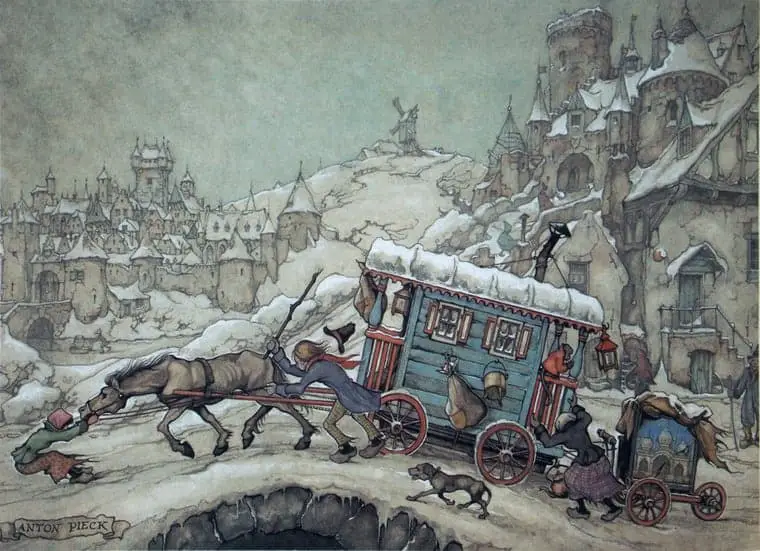
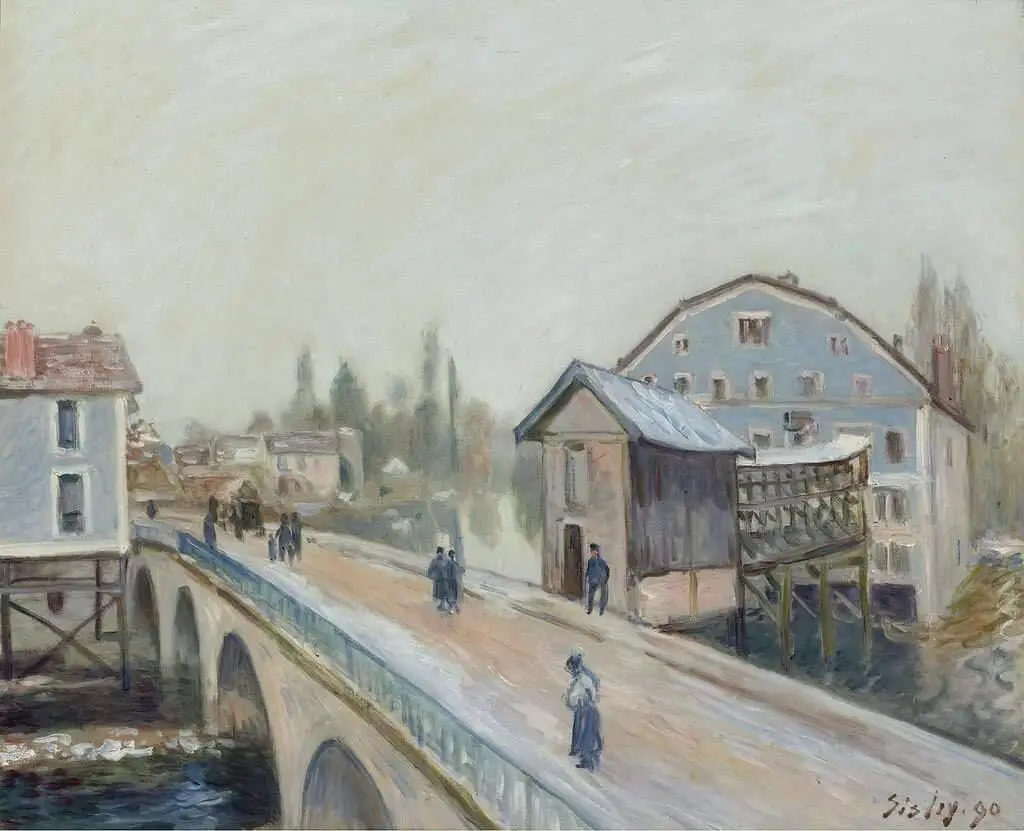
The bridge in this picture is barely warranted, but is more symbolic, transporting a child safely across a trickle of water.
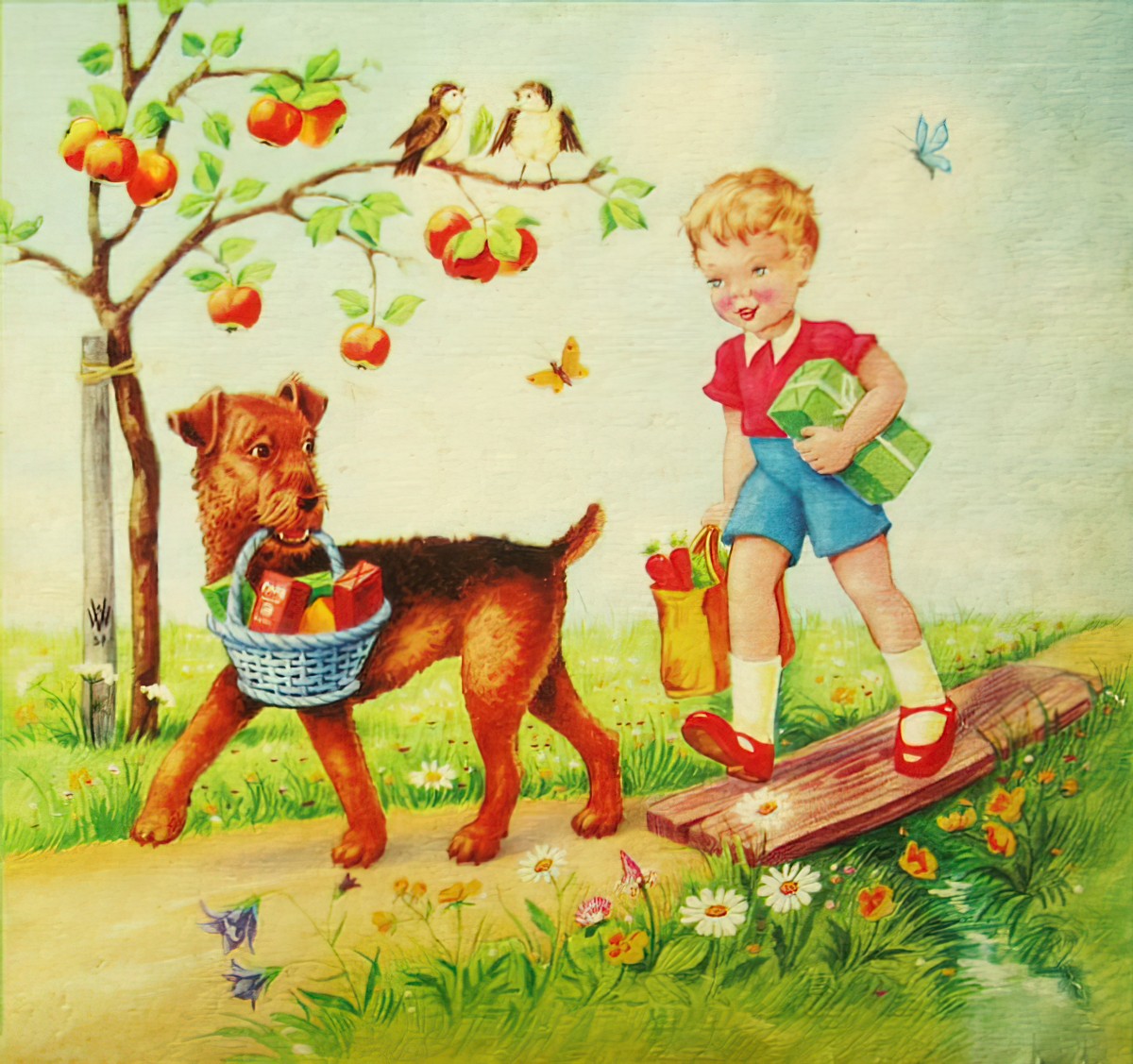
RELATED
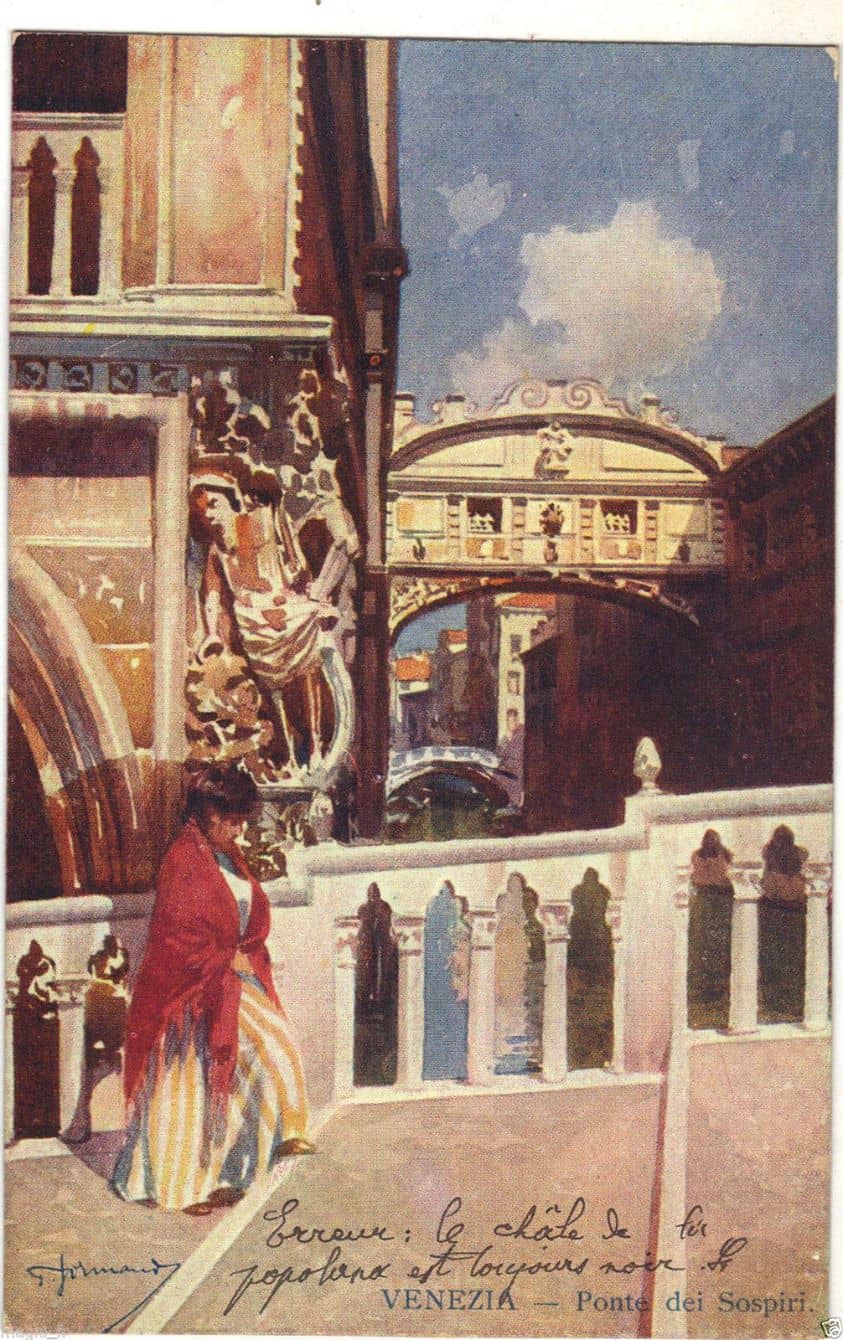
Rainbows In Art, a collection of rainbow paintings from The Public Domain Review
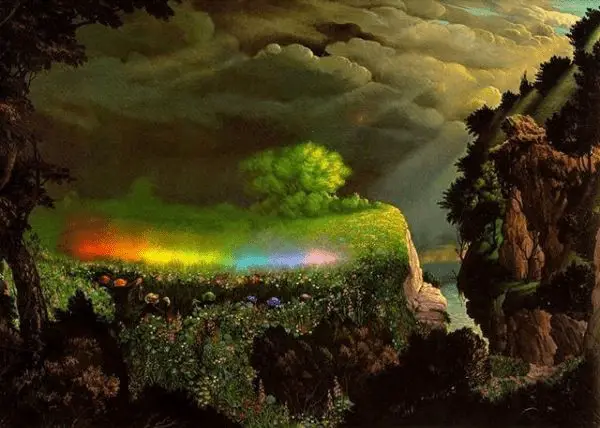
Talk for Writing Home-school Booklet: Rainbows, rainbows everywhere! by Emma Caulfield
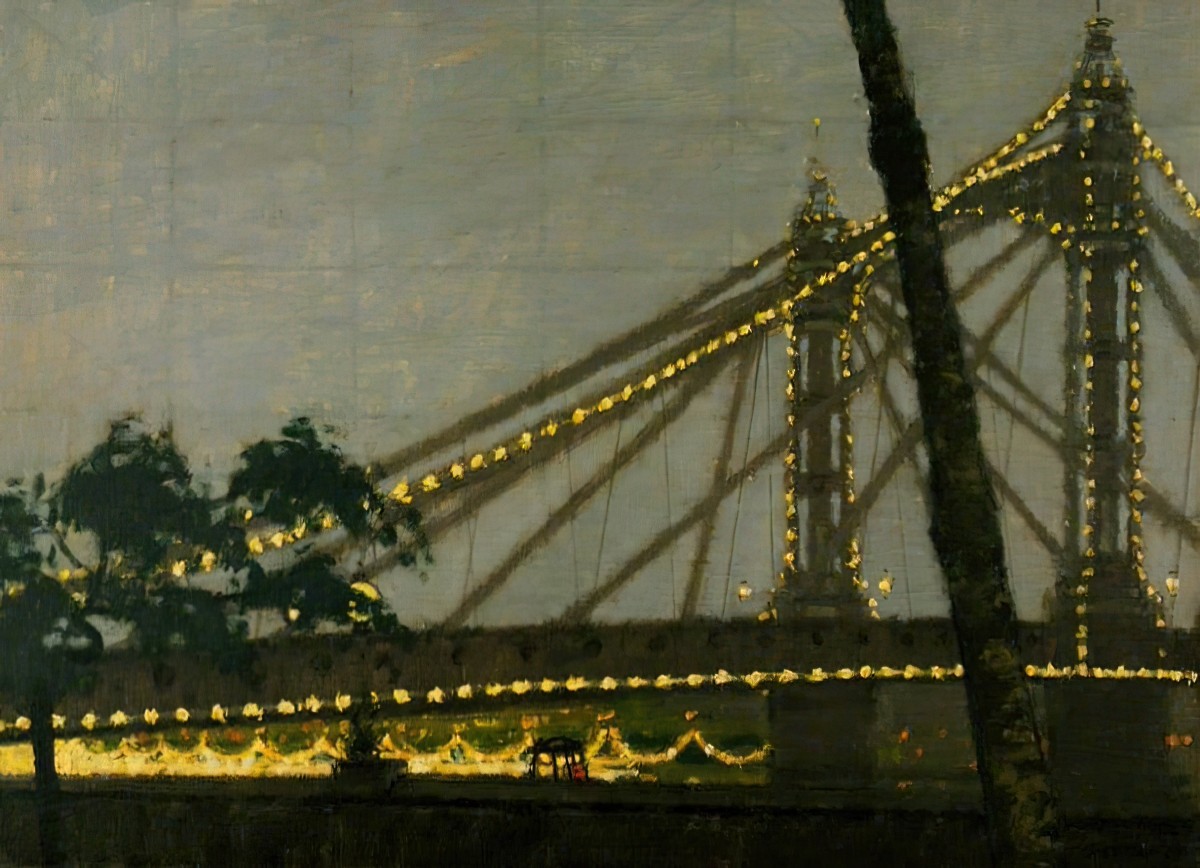
FURTHER READING
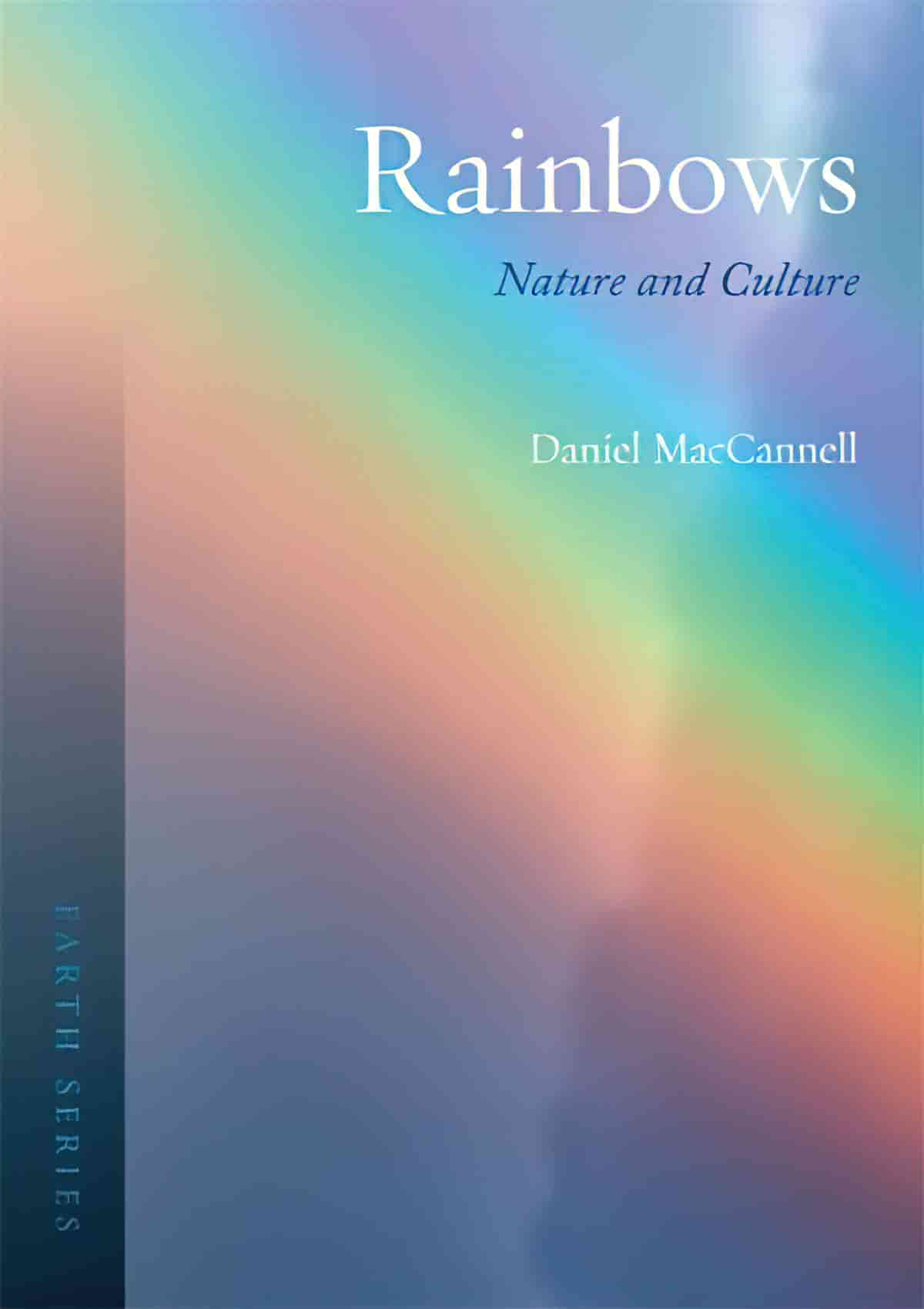
The rainbow is a compelling spectacle in nature – a rare bridge between subjective experience and objective reality, and no less remarkable as a cultural phenomenon. A symbol of the Left since the German Peasants’ War of the 1520s, it has been adopted by movements for gay rights, the environment, multiculturalism, and peace around the globe, and inspired poets, artists, and writers including John Keats, Caspar David Friedrich, Edgar Allan Poe, and Nathaniel Hawthorne. The scientific ‘discovery’ of the rainbow is a remarkable tale that takes in ancient Greece and Rome, medieval Persia, and Islamic Spain. Rainbows have also been regarded as ominous or even dangerous in myth and religion, while the twentieth century saw their emergence as kitsch, from the musical film version of The Wizard of Oz to 1980s sitcoms and children’s cartoons.
Header painting: Edmund George Warren – Crossing the Brook 1874
